
The Bottom Line
Introduction, Drive Specifications, Pricing & Availability

After seeing the writing on the wall, Western Digital made the decision to go all-in with the NAND revolution by acquiring SanDisk and the fab access that comes with it. Western Digital still leads the world in mechanical storage and plan to continue forward with mechanical storage, but now the world's largest storage company is getting serious about NAND-based storage devices.
To this point, Western Digital has released some excellent SATA-based SSDs but fallen horribly short on the consumer NVMe front. Case-in-point would be their first generation Black Series NVMe SSD. That is an SSD that never should have been taken to market. But, as of today that's old news because Western Digital is launching their second generation WD Black NVMe SSD Series and the SanDisk Extreme Pro NVMe SSD Series. As you will see, these SSDs do not disappoint.
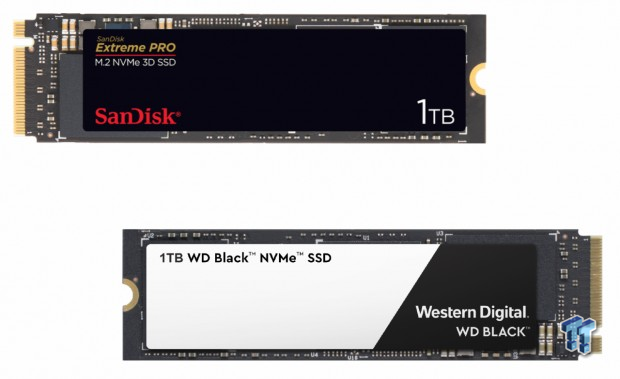
The WD Black and the SanDisk Extreme Pro NVMe are identical pieces of hardware. They perform identically, even the firmware is the same. The only difference is between the two is branding. The WD Black NVMe will be geared toward gamers, the Extreme Pro NVMe toward professionals.
For the past two years, Western Digital has been working behind the scenes to develop their own NVMe controller.
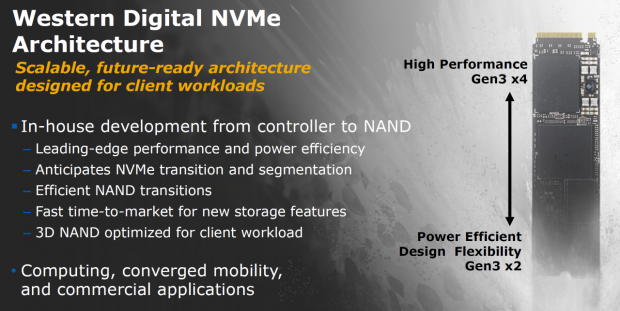
Western Digital's NVMe architecture is developed in-house from controller to NAND. Western Digital's new modular NVMe ASIC (controller) is designed with scalable future-ready features in mind, making it fast and easy to implement new storage features as they come down the pipeline.
The next-gen WD Black and Extreme Pro NVMe SSDs are designed with power and thermal efficiency in mind.
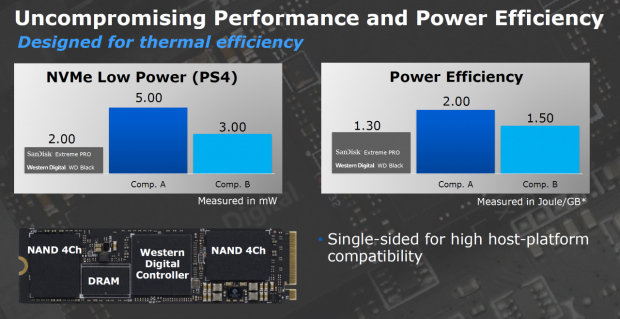
After much research, Western Digital's engineering team decided that the most efficient location for their ASIC was near the center of the PCB instead of right next to the edge connector like we typically see. This provides for better thermal efficiency and at the same time more efficient trace paths to the NAND packages. Additionally, the new NVMe SSDs from Western Digital are fully NVMe 1.3 compliant providing for class-leading power efficiency.
Western Digital NVMe Architecture for consumers is designed from the ground up for Gaming and for Creative Professionals with the following features:
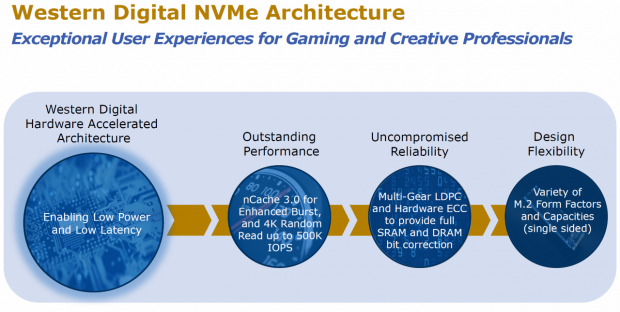
Hardware accelerated architecture that reduces CPU cycles by relying on more on hardware features and less on firmware. nCache 3.0 providing up to 500K random 4K read IOPS. Multi-Geared LDPC and hardware ECC providing full SRAM and DRAM bit correction. M.2 single-sided design for high host-platform compatibility.
Western Digital's Hardware Accelerated Architecture enables low power and low command latency for maximum efficiency.
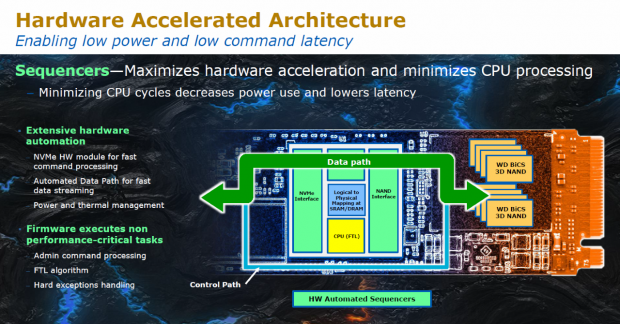
Hardware automated sequencers maximize hardware acceleration and minimize CPU processing providing a more efficient data path for fast data streaming. The NVMe hardware module provides fast command processing. The firmware executes non-performance critical tasks including Admin command processing. The Flash Translation Layer handles algorithm and hard exceptions handling.
Western Digital Tiered Caching improves performance and burst access:
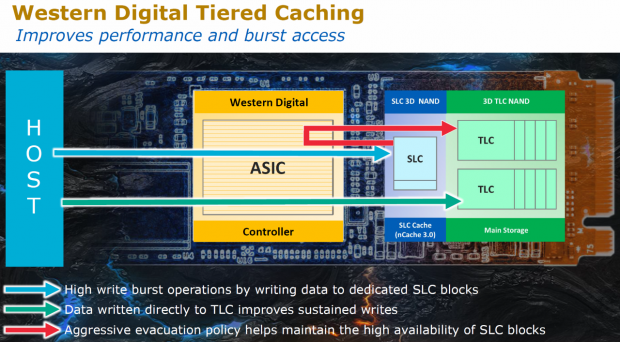
Western Digital's Tiered caching first writes to dedicated SLC (nCache 3.0) blocks. If the dedicated SLC layer becomes full, the host writes directly to the TLC portion of the NAND array. To maintain high availability of SLC blocks, WD employs an aggressive SLC block evacuation policy of 50ms.
Western Digital ECC Architecture improves performance and read access:
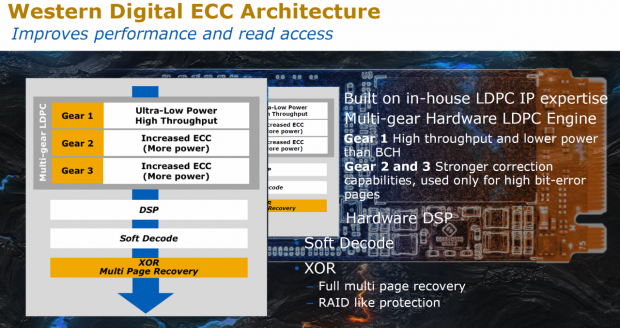
Western Digital's multi-gear LDPC is built on in-house LDPC IP expertise. The multi-gear hardware LDPC engine consists of three "gears" that shift whenever required. Gear 1 provides high throughput and lower power consumption than BCH ECC. Gears 2 and 3 provide stronger error correction capabilities and are only used for high bit-error pages. Additional data protection is provided by hardware DSP, soft decode and XOR multi-page data recovery.
The WD Black NVMe SSD is available in 250GB, 500GB, and 1TB capacities on a single-sided M.2 2280 form factor. The SanDisk Extreme Pro NVMe SSD is available in 500GB and 1TB capacities. Both the WD Black and the SanDisk Extreme Pro provide leading-edge performance with sequential read/write speeds of up to 3,400 MB/s and 2,800 MB/s.
Western Digital's NVMe SSDs pair WD's in-house NVMe controller with Western Digital's own BiCS 3 64-layer 3D flash. DDR3 DRAM is used in a 1MB to 1GB of flash ratio for table caching and ECC functions. Will Western Digital's newest offerings be able to challenge Samsung's mighty 960 Pro for flash-based performance supremacy? Let's find out.
Specifications
WD Black NVMe & SanDisk Extreme Pro NVMe 1TB PCIe NVMe SSD
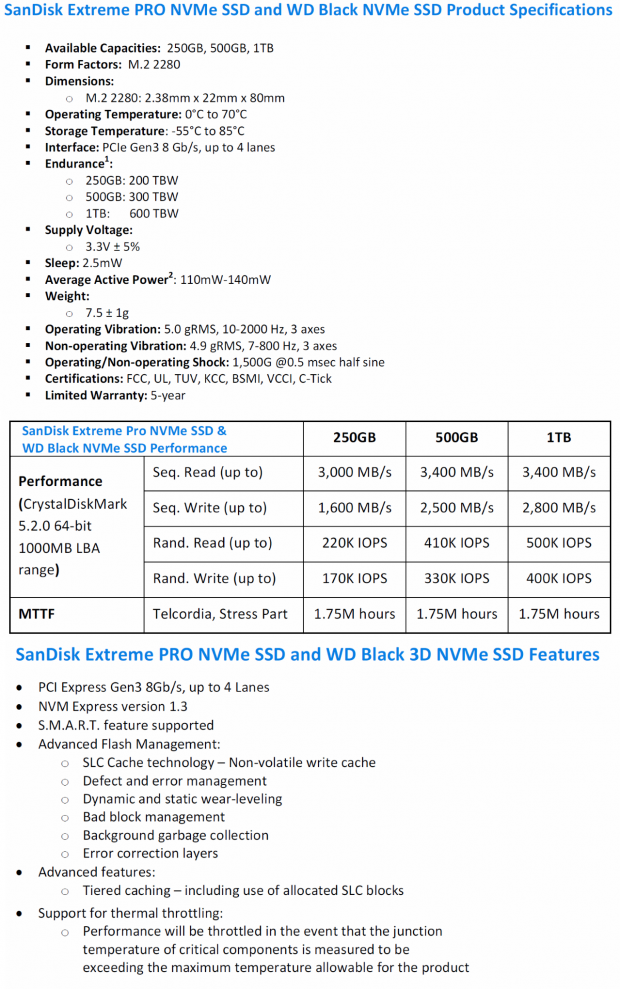
- Sequential Read: up to 3,400 MB/s
- Sequential Write: up to 2,800 MB/s
- Max 4K Random Read Speed: up to 500,000 IOPS
- Max 4K Random Write Speed: up to 400,000 IOPS
- Endurance: up to 600 TBW
- MTBF: 1.75 Million Hours
- Warranty: 5-Year Limited Warranty
- Software: SSD Dashboard, Acronis True Image
MSRP:
250GB (WD Black only) $119.99
500GB (both brands) $229.99
1TB (both brands) $449.99
Drive Details
WD Black M.2 NVMe 1TB & SanDisk Extreme Pro M.2 NVMe 1TB
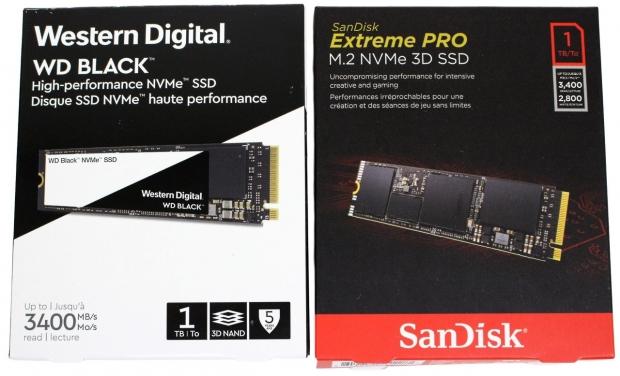
Both drives ship in familiar looking packaging. There is an image of the enclosed SSD on the front. Capacities and sequential performance are advertised here. When purchasing the WD Black, we would recommend that you be careful to verify that you are not getting the older model.
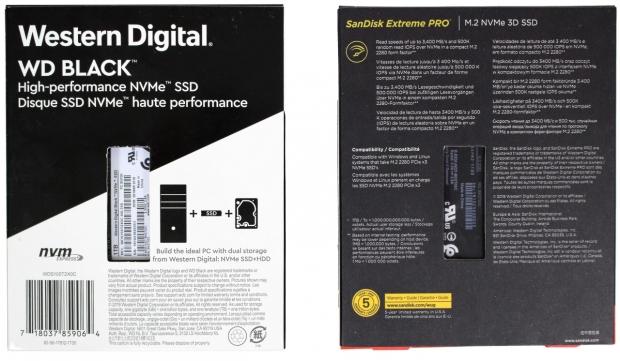
The back of the packaging has a cutout where you can view the drive's manufacturer label.
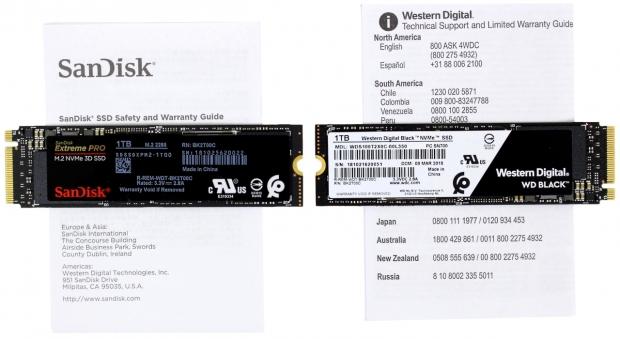
Included with the SSD is a printed warranty guide.
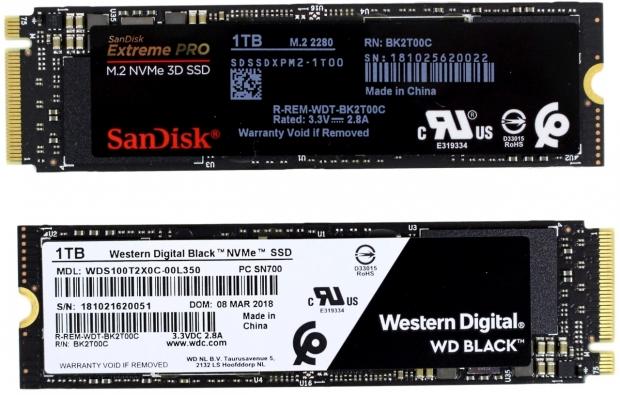
We are not removing the labels, but we will tell you what is under them. Under the label you will find a WD NVMe controller, two 512GB BiCS 3 64-Layer TLC flash packages and a single 1024MB DDR3 1600MHz DRAM package.
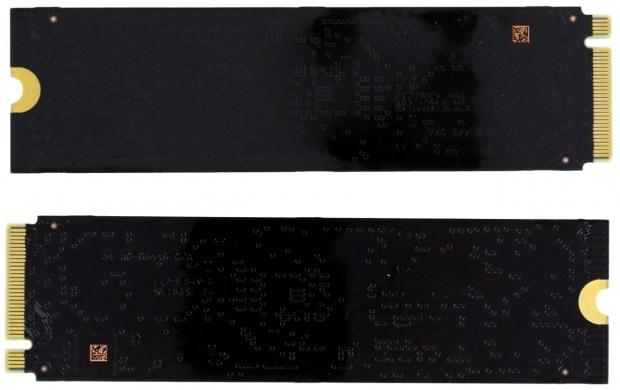
There are no components located on this side of the PCB, thus making it a single-sided design.
Test Systems, SSD Dashboard & Drive Properties
Jon's Consumer Z270 PCIe SSD Review Test System Specifications
- Motherboard: ASRock Z270 Taichi - Buy from Amazon
- CPU: Intel Core i7 7700K @ 5.0GHz - Buy from Amazon / Read our review
- Cooler: Swiftech H2O-320 Edge - Buy from Amazon / Read our review
- Memory: Corsair Vengeance LPX DDR4 16GB 3000MHz - Buy from Amazon
- Video Card: Onboard Video
- Case: IN WIN X-Frame - Buy from Amazon / Read our review
- Power Supply: Seasonic Platinum 1000 Watt Modular - Buy from Amazon / Read our review
- OS: Microsoft Windows 10 Professional 64-bit - Buy from Amazon
- Drivers: MS Win 10 NVMe driver
Jon's Consumer X299 PCIe SSD Review Test System Specifications
- Motherboard: ASRock Fatal1ty X299 Pro Gaming i9 XE - Read our review
- CPU: Intel Core i9 7900X @ 4.9GHz - Buy from Amazon / Read our review
- Cooler: Swiftech H2O-320 Edge - Buy from Amazon / Read our review
- Memory: Corsair Vengeance LPX DDR4 16GB 3200MHz - Buy from Amazon
- Video Card: MSI NVIDIA GTX 1050
- Case: IN WIN X-Frame - Buy from Amazon / Read our review
- Power Supply: Seasonic Platinum 1000 Watt Modular - Buy from Amazon / Read our review
- OS: Microsoft Windows 10 Professional 64-bit - Buy from Amazon
- Drivers: MS Win 10 NVMe driver
We would like to thank ASRock, Crucial, Intel, Corsair, RamCity, IN WIN, and Seasonic for making our test systems possible.
WD SSD Dashboard
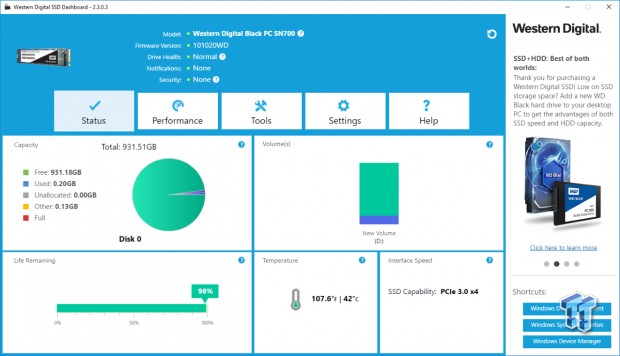
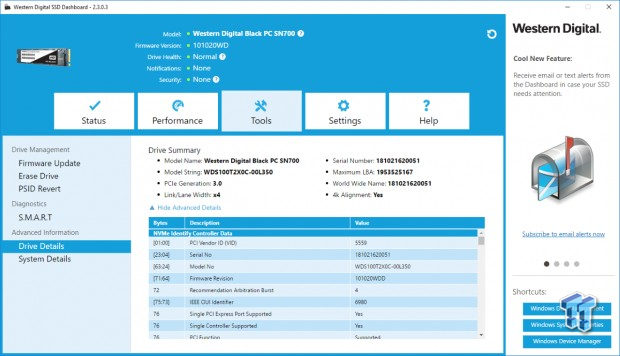
SanDisk SSD Dashboard
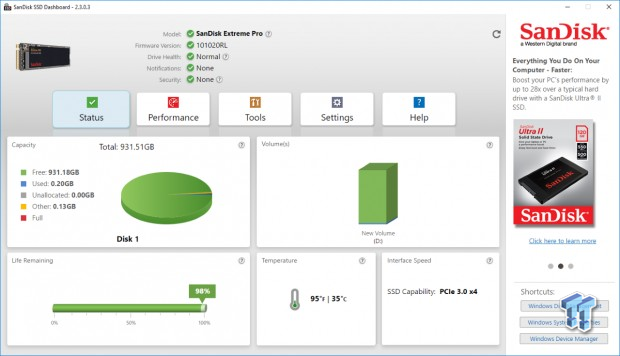
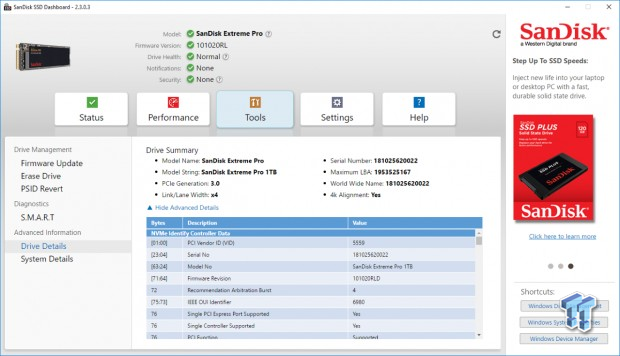
Both Dashboards function the same. You can monitor drive status, performance, secure erase by making a bootable USB device, update firmware and monitor temps. The Dashboard is very functional, but we do not like the incessant ads rotating on the right side of the Dashboard, or that you need to make a bootable USB device to perform a Secure Erase. The 98% of drive life we have remaining shows that we wrote 12TB of data to each drive during our testing.
Drive Properties
WD Black 1TB M.2 NVMe SSD OS Disk 75% Full
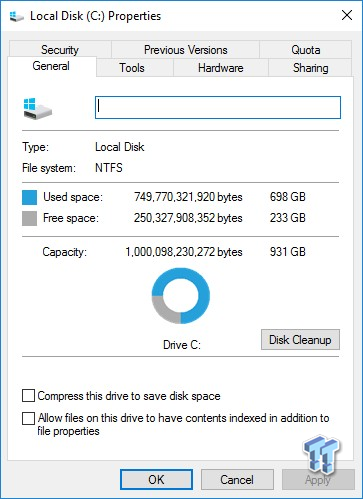
SanDisk Extreme Pro 1TB M.2 NVMe SSD OS Disk 75% Full
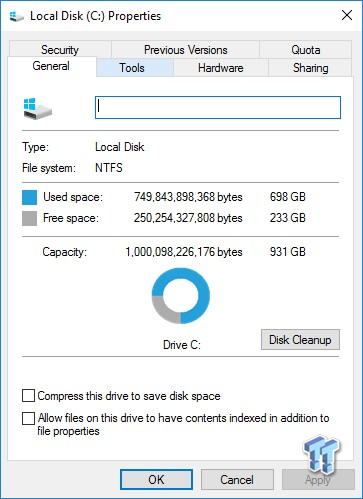
The majority of our testing is performed with the test subject as our boot volume. Our boot volume is 75% full for all OS Disk "C" drive testing to replicate a typical consumer OS volume implementation. We feel that most of you will be utilizing your SSDs for your boot volume and that presenting you with results from an OS volume is more relevant than presenting you with empty secondary volume results.
System settings: Cstates and Speed stepping are both disabled in our systems BIOS. Windows High-Performance power plan is enabled. We are utilizing Windows 10 Pro 64-bit OS (Build 14393) for testing except for our MOP (Maxed-Out Performance) benchmarks where we switch to Windows Server 2008 R2 64-bit. Empty Windows 10 benchmark screenshots will also be shown on our MOP page.
We benched the WD Black on our X299 test system and the Extreme Pro on our usual Z270 test system.
Please note: When comparing our results to those of other review sites, look at page 10 Maxed Out Performance-Windows 10 which is done with the disk empty.
Benchmark screenshots will be shown WD Black (X299) first followed by SanDisk Extreme Pro (Z270).
Synthetic Benchmarks - ATTO & Anvil Storage Utilities
ATTO
Version and / or Patch Used: 3.05
ATTO is a timeless benchmark used to provide manufacturers with data used for marketing storage products. When evaluating ATTO performance we focus on the drive's performance curve.
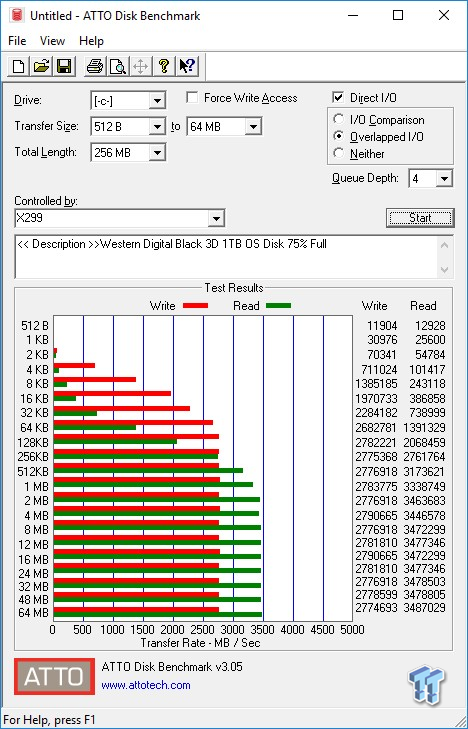
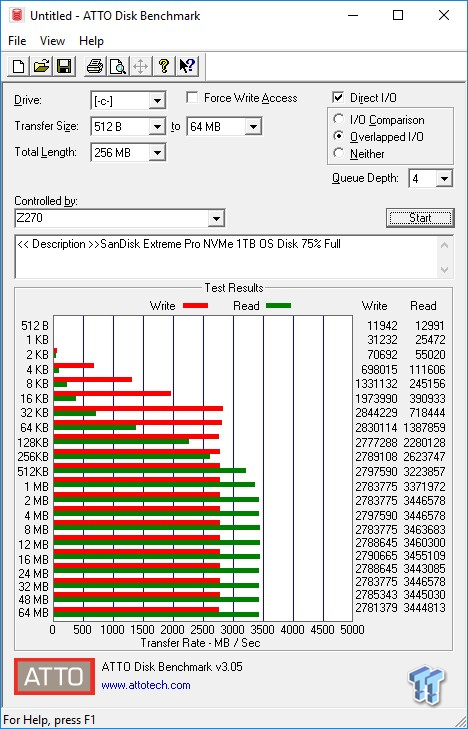
Both drives on both platforms are able to attain factory max sequential performance specifications despite this test running at only QD4.
Sequential Write
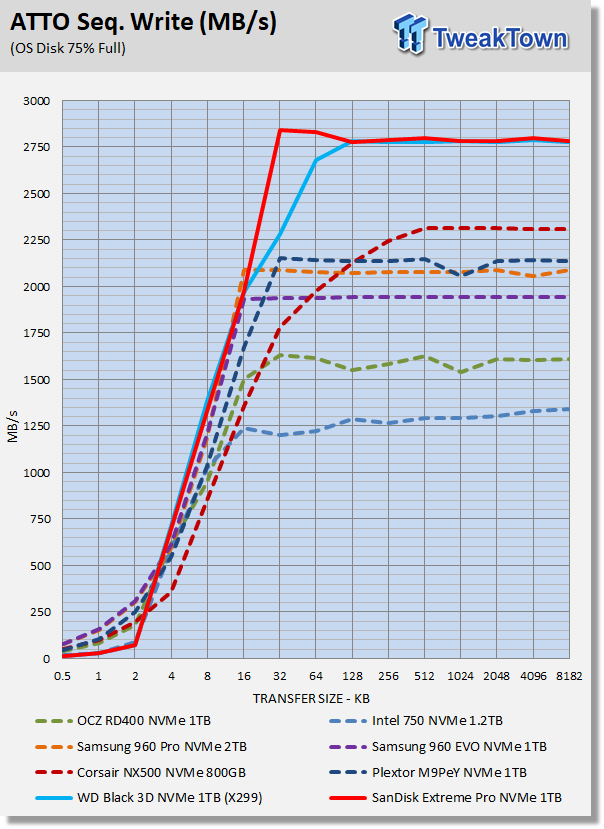
Both drives on both platforms come out of the gate swinging hard; delivering the best sequential write performance we've seen to date from a consumer SSD. New lab record.
Sequential Read
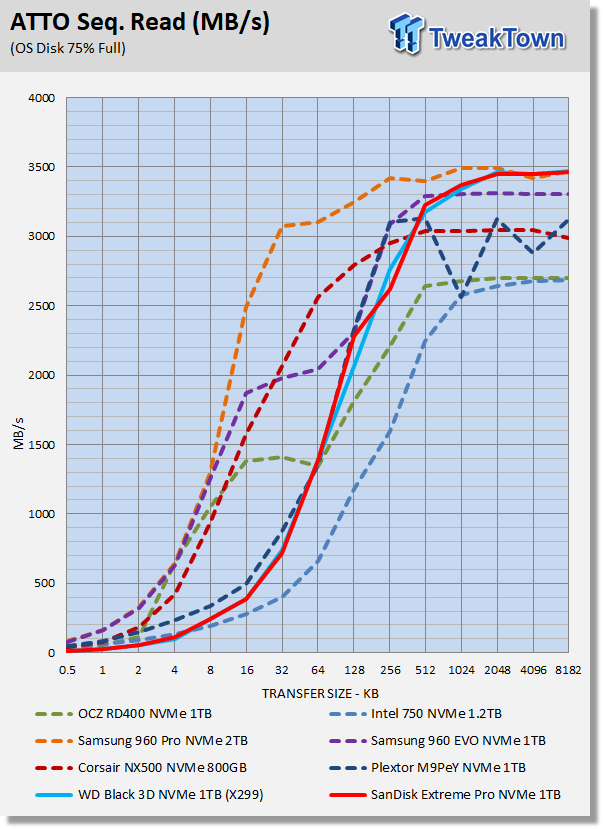
Maximum sequential performance is very good; however, we would like to see a better performance curve.
Anvil Storage Utilities
Version and / or Patch Used: 1.1.0
Anvil's Storage Utilities is a storage benchmark designed to measure the storage performance of SSDs. The Standard Storage Benchmark performs a series of tests; you can run a full test or just the read or write test, or you can run a single test, i.e. 4K QD16. When evaluating performance with Anvils, we focus on total score. When evaluating NVMe SSDs we are typically looking for a minimum total score of over 10K. We place a greater importance on read performance than write performance.
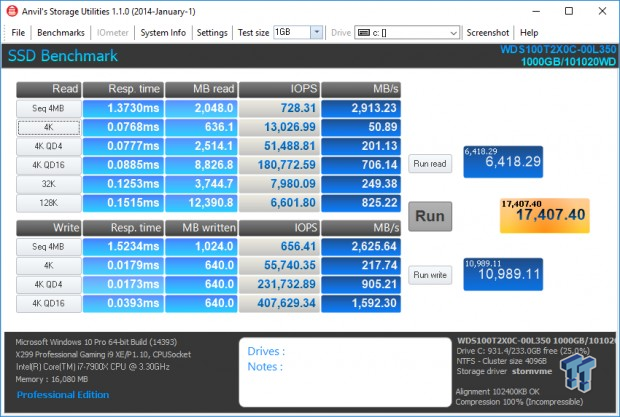
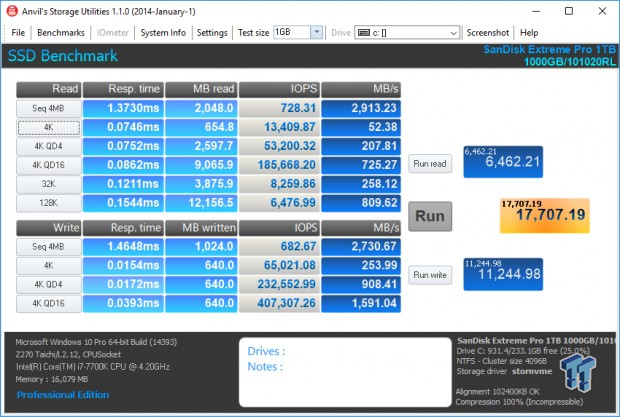
Scoring
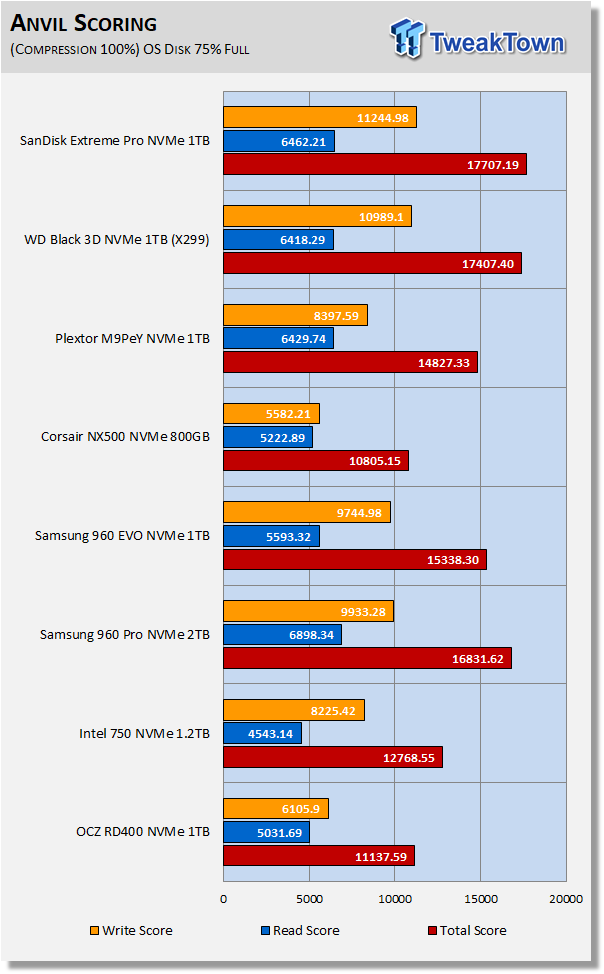
In terms of total score, both drives on both platforms set new lab records for flash-based consumer SSDs. However, Samsung's 960 Pro still retains the crown for overall synthetic read performance.
(Anvil) Read IOPS through Queue Depth Scale
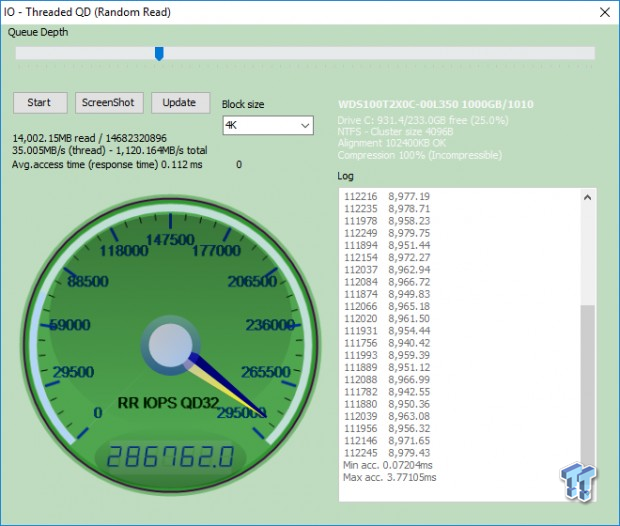
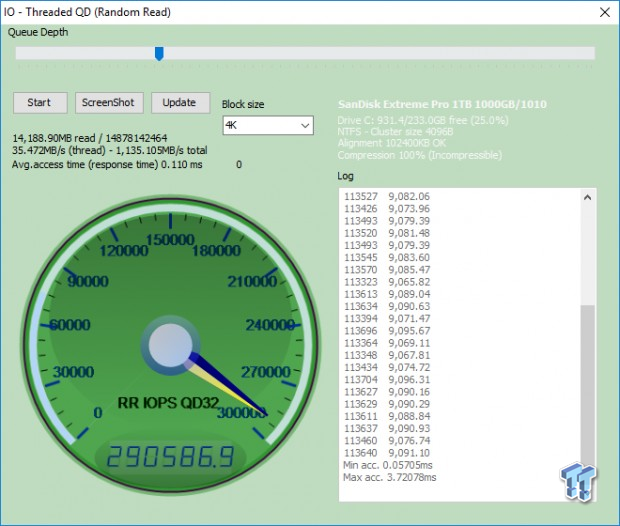
Only the 960 Pro is able to deliver better random read performance at QD32.
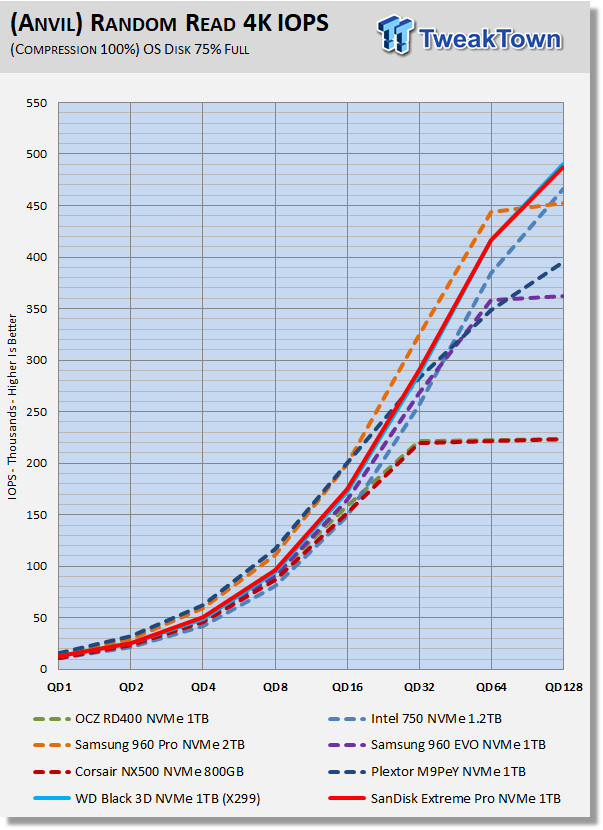
The Plextor M9PeY and the Samsung 960 Pro both deliver a better performance curve than we are getting from our test subjects.
(Anvil) Write IOPS through Queue Scale
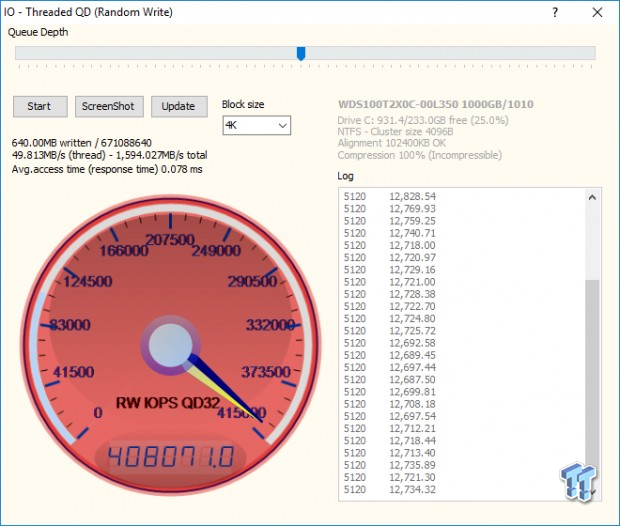
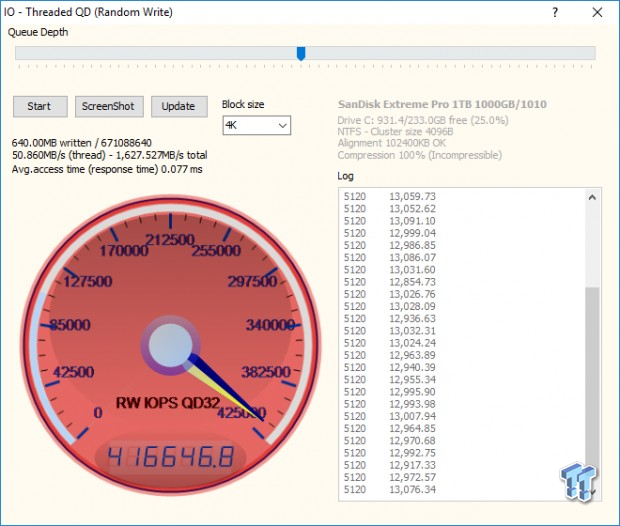
Random write IOPS at QD32 with a partition on the drives easily surpasses factory specs which are given at QD256.
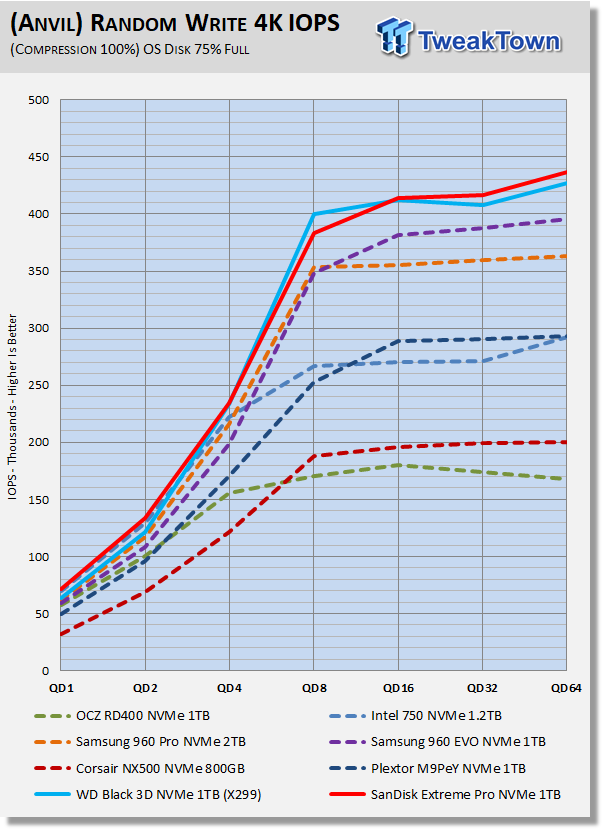
Overall, both of our test subjects are delivering the best random write performance we've seen from any consumer flash-based SSDs. New Lab record.
Synthetic Benchmarks - CrystalDiskMark & AS SSD
CrystalDiskMark
Version and / or Patch Used: 3.0 Technical Preview
CrystalDiskMark is disk benchmark software that allows us to benchmark 4K and 4K queue depths with accuracy. Note: Crystal Disk Mark 3.0 Technical Preview was used for these tests since it offers the ability to measure native command queuing at QD4. When evaluating CDM results, we focus on 4K random performance at QD1 and QD4.
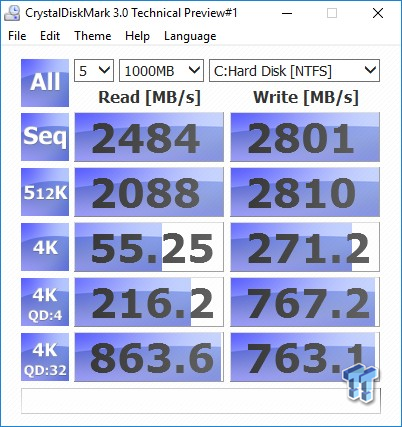
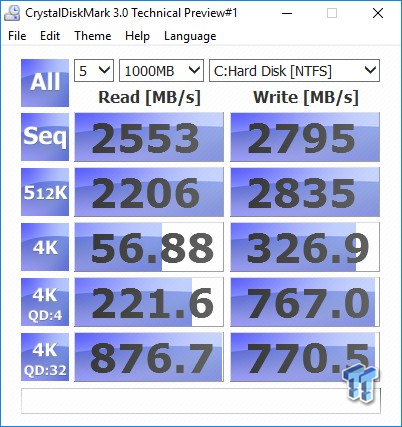
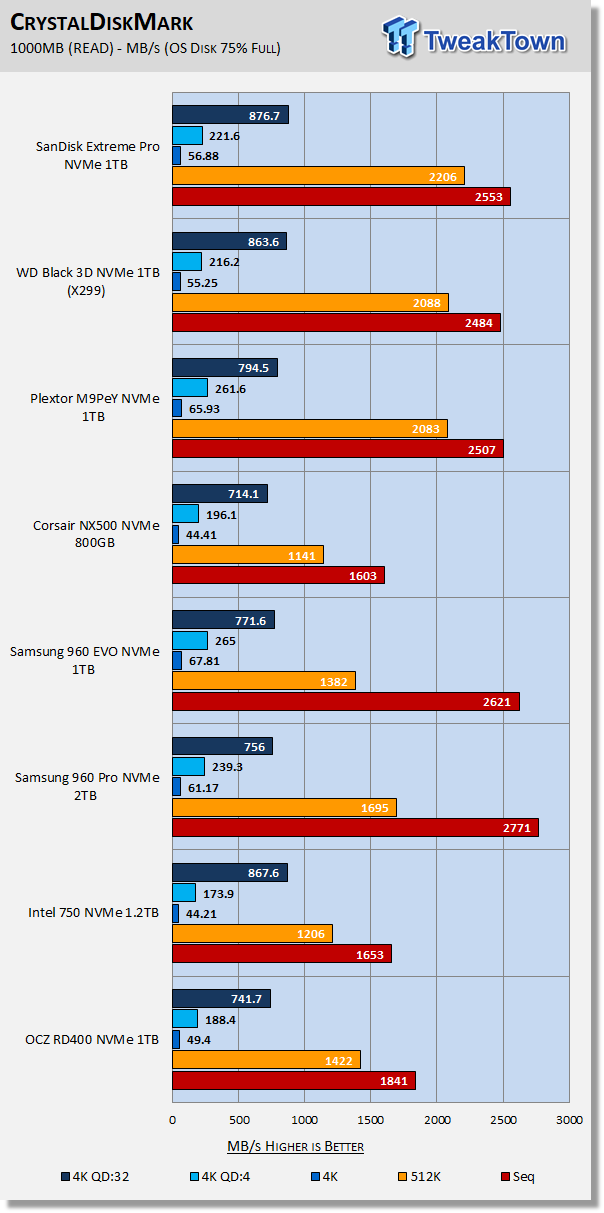
Focusing in on QD1 and QD4 we see both of our test subjects delivering decent performance, but nowhere near that of the Samsung and Plextor contenders. However, at QD32, the WD drives lead the field.
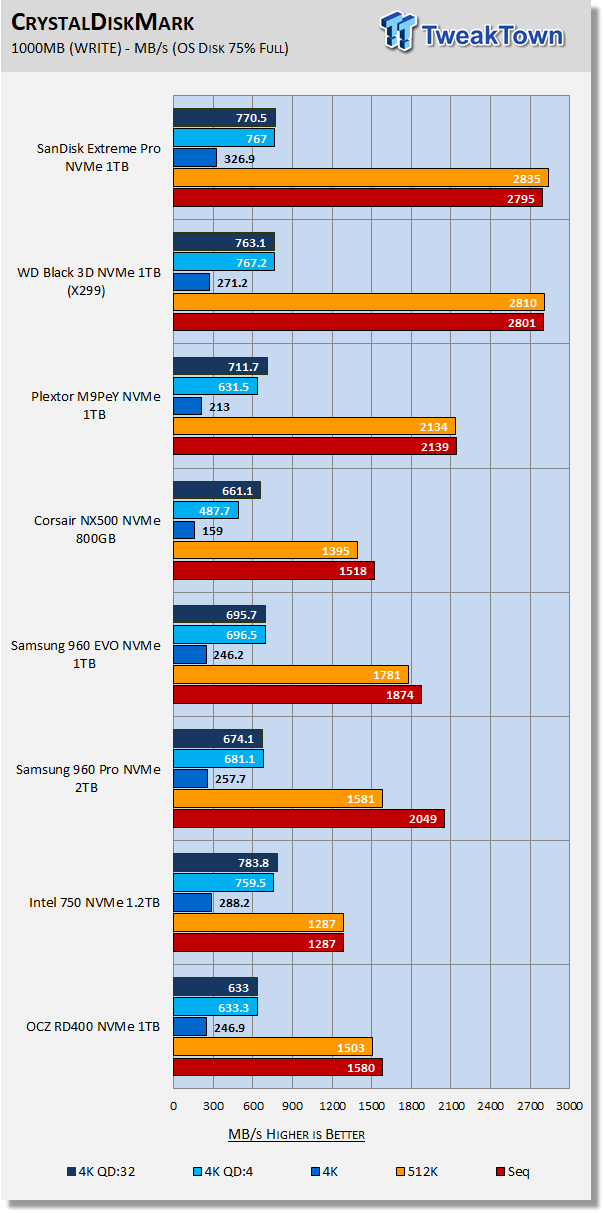
Overall, this is the best write performance we've ever seen from a flash-based consumer SSD. Another lab record served up by Western Digital.
AS SSD
Version and / or Patch Used: 1.8.5611.39791
AS SSD determines the performance of SSDs. The tool contains four synthetic as well as three practice tests. The synthetic tests are to determine the sequential and random read and write performance of the SSD. We evaluate AS SSD performance in terms of overall score. We are looking for a minimum score of 2,000 when evaluating NVMe SSDs

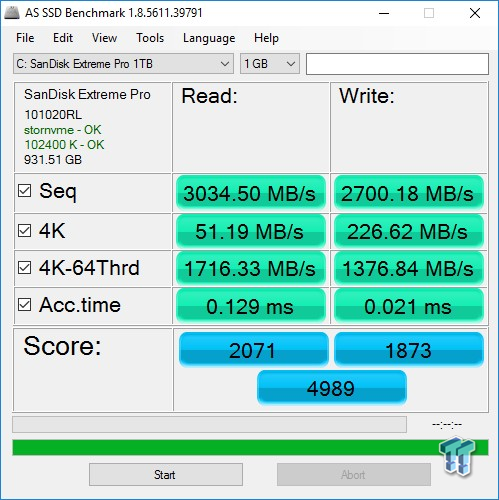
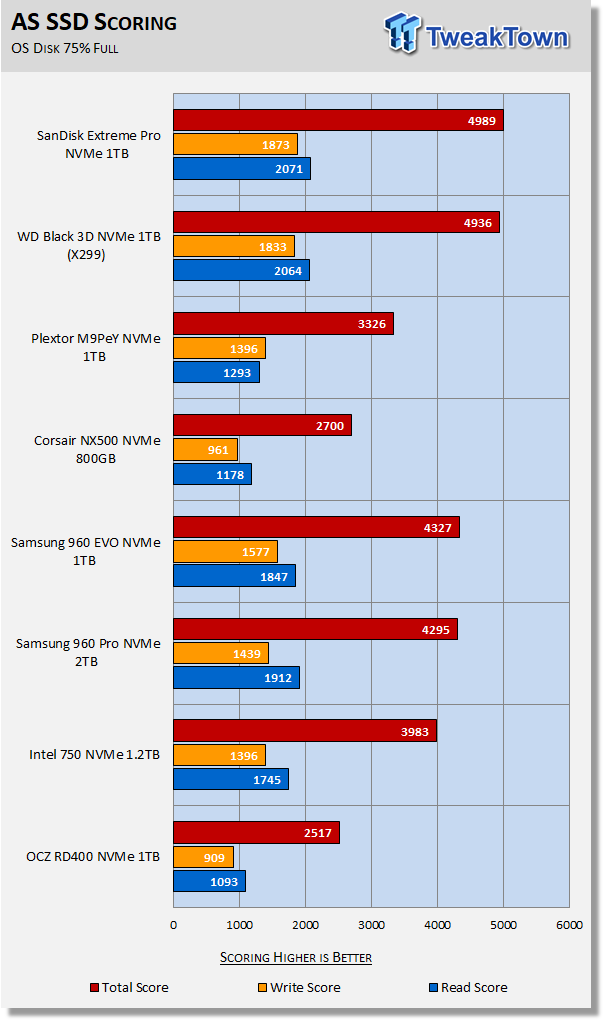
AS SSD is a demanding test - that is unless you are running a Western Digital NVMe SSD. Yet another lab record for a flash-based SSD goes to Western Digital in spectacular fashion.
Benchmarks (OS) - Vantage, PCMark 7, PCMark 8 & More
Moderate Workload Model
We categorize these tests as indicative of a moderate workload environment.
PCMark Vantage - Hard Disk Tests
Version and / or Patch Used: 1.2.0.0
The reason we like PCMark Vantage is because the recorded traces are played back without system stops. What we see is the raw performance of the drive. This allows us to see a marked difference between scoring that other trace-based benchmarks do not exhibit. An example of a marked difference in scoring on the same drive would be empty vs. filled vs. steady state.
We run Vantage three ways. The first run is with the OS drive 75% full to simulate a lightly used OS volume filled with data to an amount we feel is common for most users. The second run is with the OS volume written into a "Steady State" utilizing SNIA's consumer guidelines.
Steady-state testing simulates a drive's performance similar to that of a drive that been subjected to consumer workloads for extensive amounts of time. The third run is a Vantage HDD test with the test drive attached as an empty, lightly used secondary device.
OS Volume 75% Full - Lightly Used
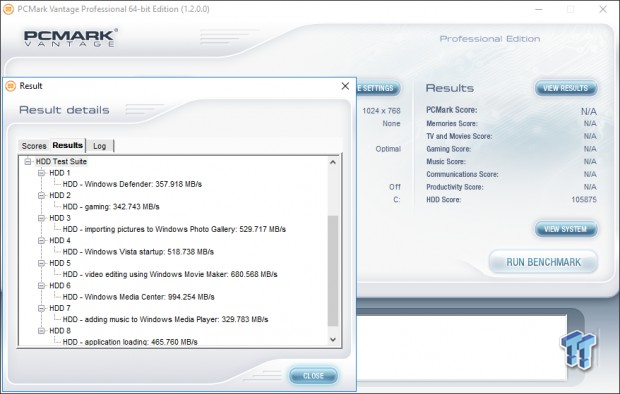
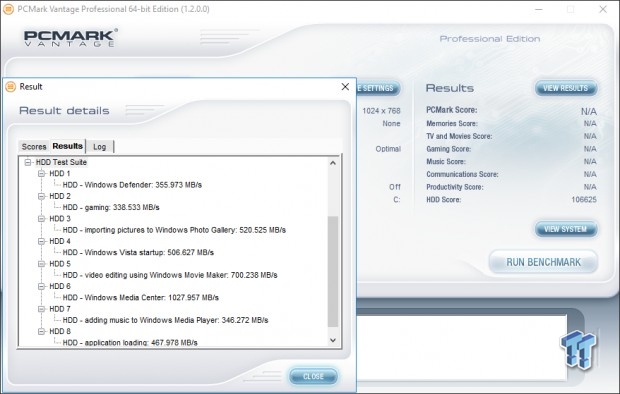
OS Volume 75% Full - Steady State
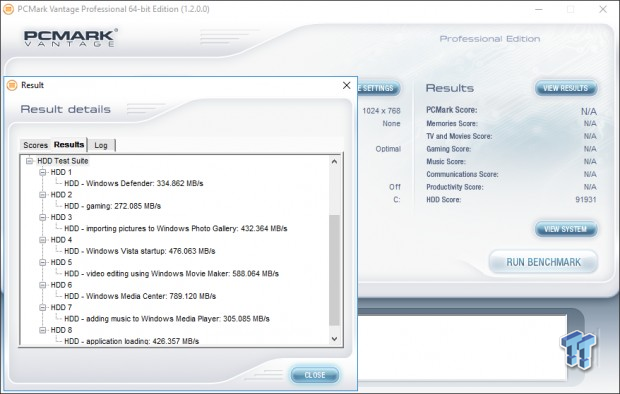
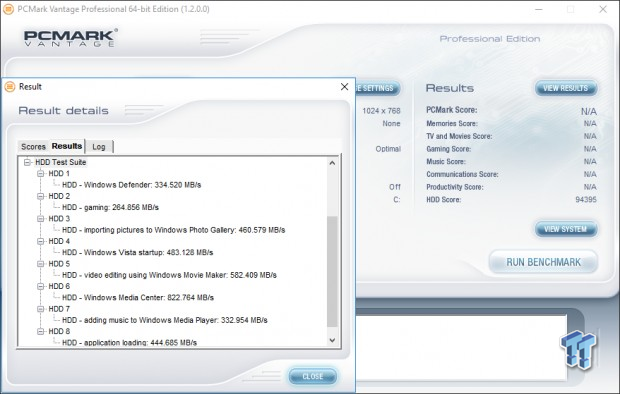
Secondary Volume Empty - FOB
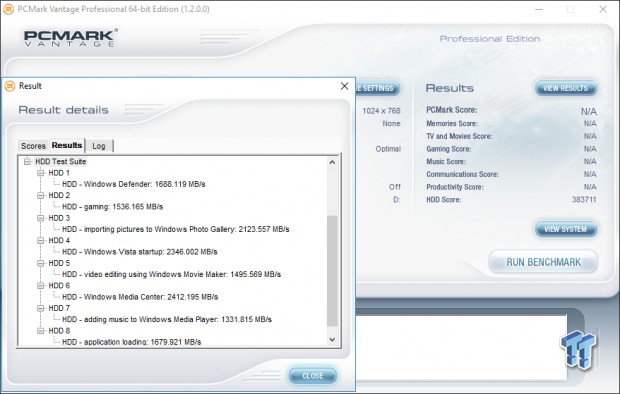
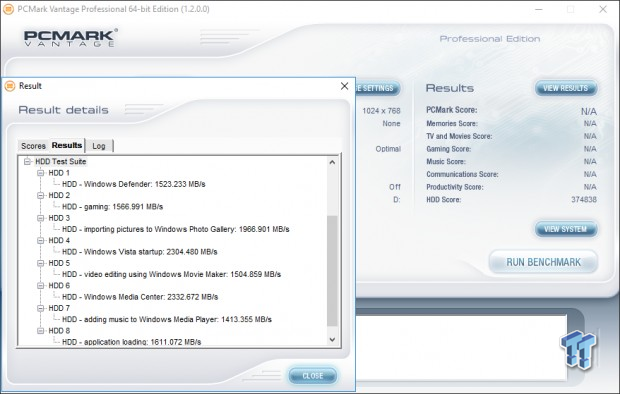
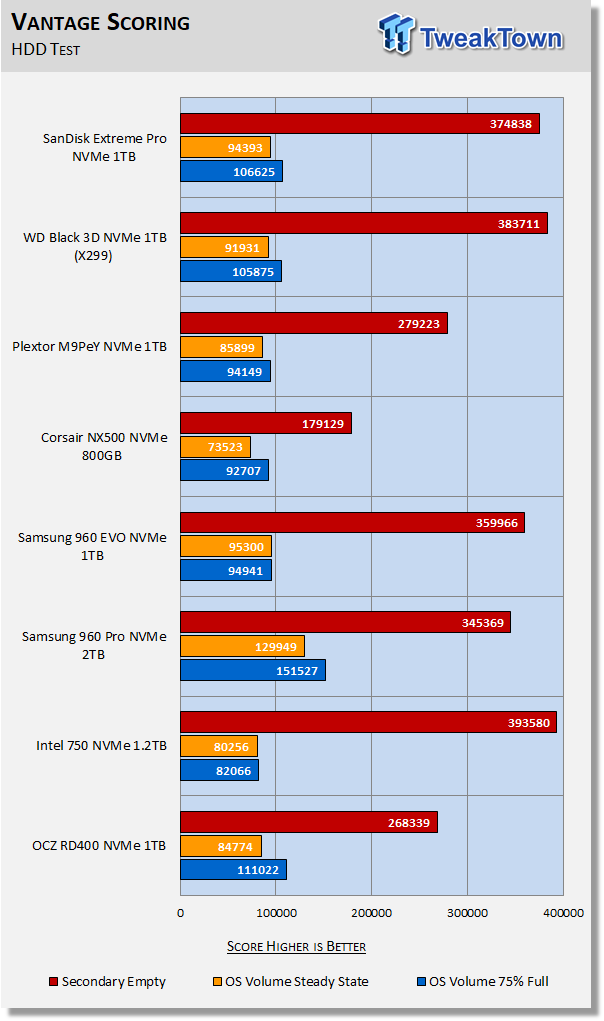
The important scores to pay attention to are "OS Volume Steady State" and "OS Volume 75% full." These two categories are most important because they are indicative of typical of consumer user states. When a drive is in a steady state, it means garbage collection is running at the same time it's reading/writing.
At 75% full, our test subjects deliver the best scores we've gotten from any consumer TLC SSD. In a steady-state, the 960 EVO just edges out Western Digital's offerings. The MLC powered Samsung 960 Pro still owns this test.
PCMark 7 - System Storage
Version and / or Patch Used: 1.4.0
We will look to Raw System Storage scoring for evaluation because it's done without system stops and, therefore, allows us to see significant scoring differences between drives. When evaluating NVMe SSDs we are looking for a minimum score of 11,000
OS Volume 75% Full - Lightly Used
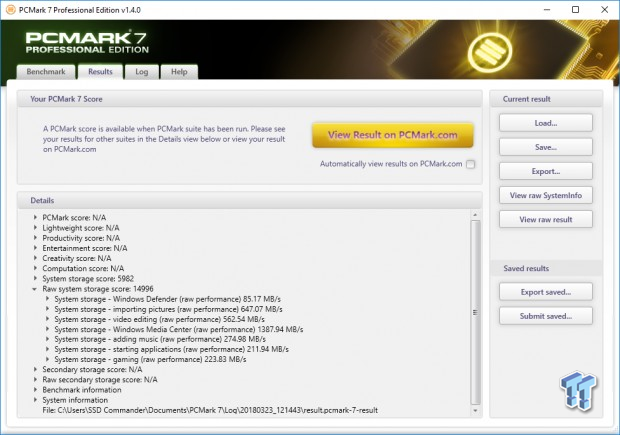
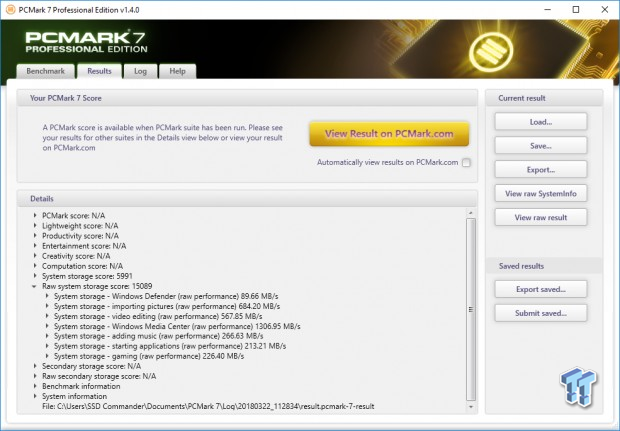
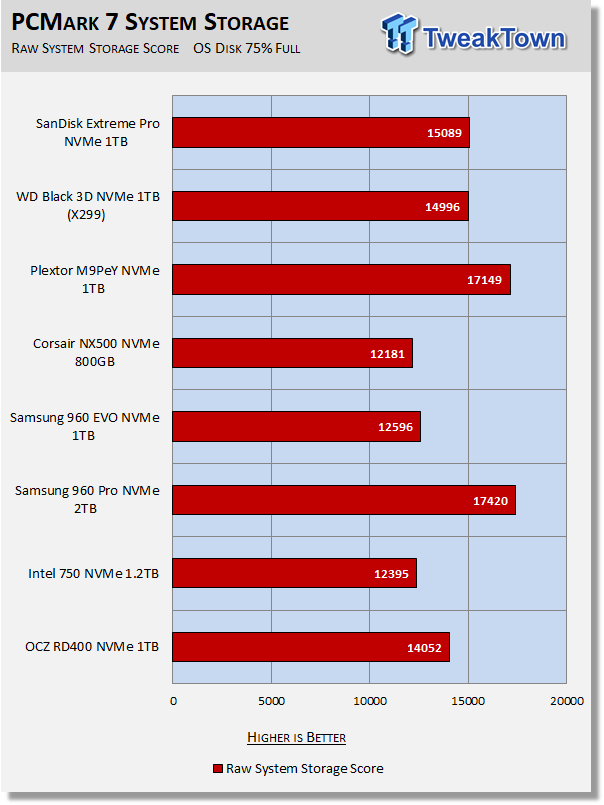
Samsung's 960 Pro and Plextor's M9PeY both deliver higher performance than our test subjects.
PCMark 8 - Storage Bandwidth
Version and / or Patch Used: 2.4.304
We use PCMark 8 Storage benchmark to test the performance of SSDs, HDDs, and hybrid drives with traces recorded from Adobe Creative Suite, Microsoft Office, and a selection of popular games.
You can test the system drive or any other recognized storage device, including local external drives. Unlike synthetic storage tests, the PCMark 8 Storage benchmark highlights real-world performance differences between storage devices.
OS Volume 75% Full - Lightly Used
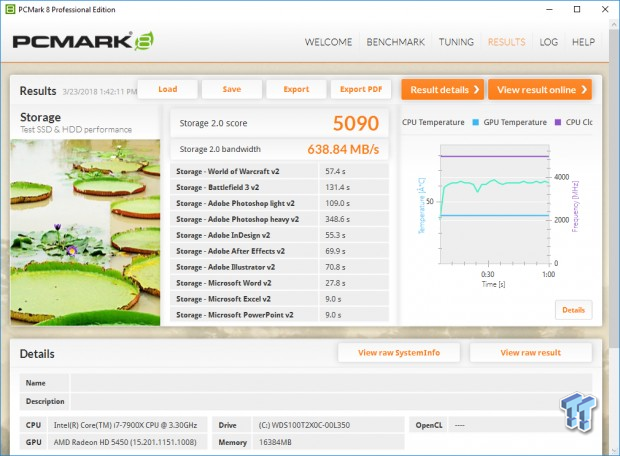
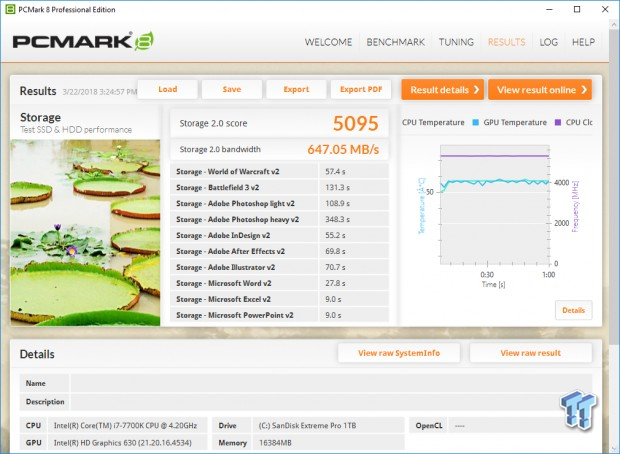
PCMark 8 is the most intensive moderate workload simulation we run. With respect to moderate consumer type workloads, this test is what we consider the best indicator of a drive's performance.
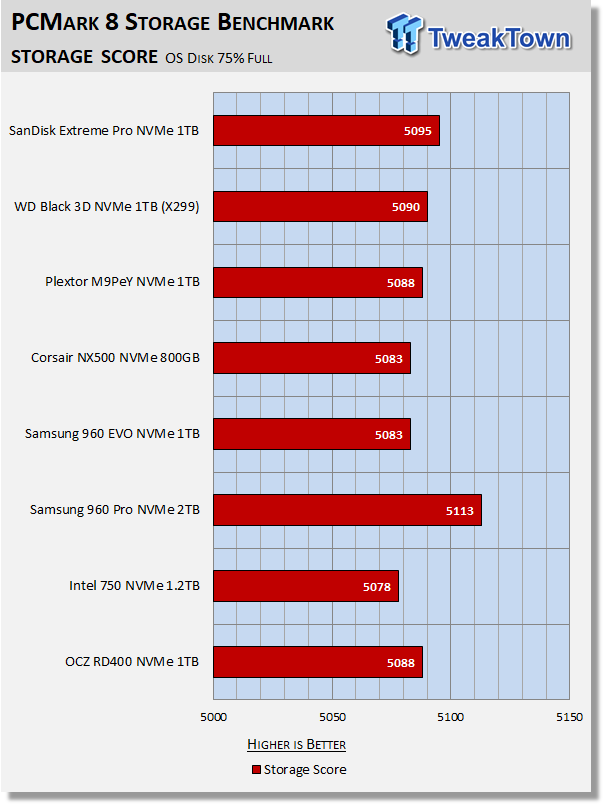
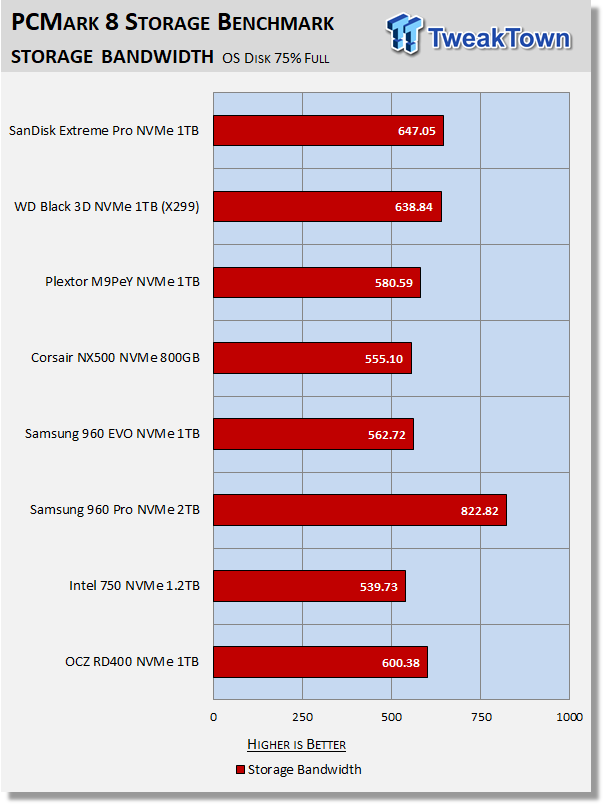
Both test subjects deliver lab records for TLC-based SSDs. Stunning performance considering that Western Digital doesn't have a proprietary NVMe driver to boost performance.
BAPCo SYSmark 2014 SE Application Performance
Version and / or Patch Used: 2.0.0.70
SYSmark 2014 SE is considered the gold standard for testing system performance because it is an application-based benchmark.
This test gives us the ultimate in real-world results because it utilizes actual applications running on the system, instead of playing back recorded traces. If you want to know what kind of impact a particular SSD will have on your system's overall performance; this test will show you.
Our systems are much more powerful than the calibration system (1000-point baseline) used by BAPCo, so we ran an OCZ TL100 120GB SATA III SSD to establish a comparison point relative to our test systems. We will be running this test going forward and we will add drives to our chart as we test them.
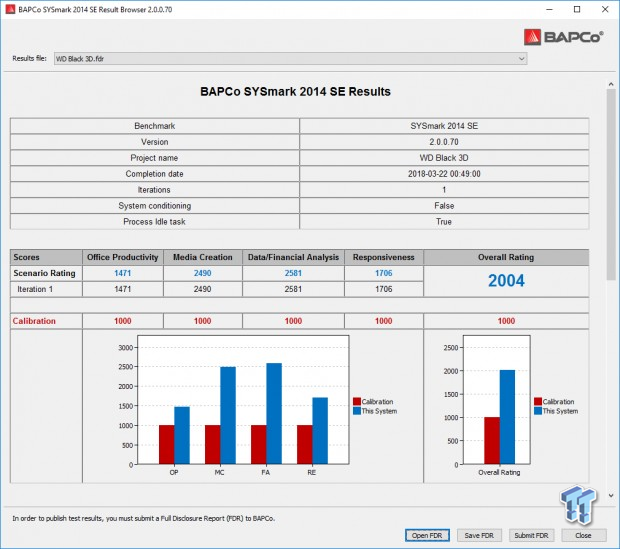
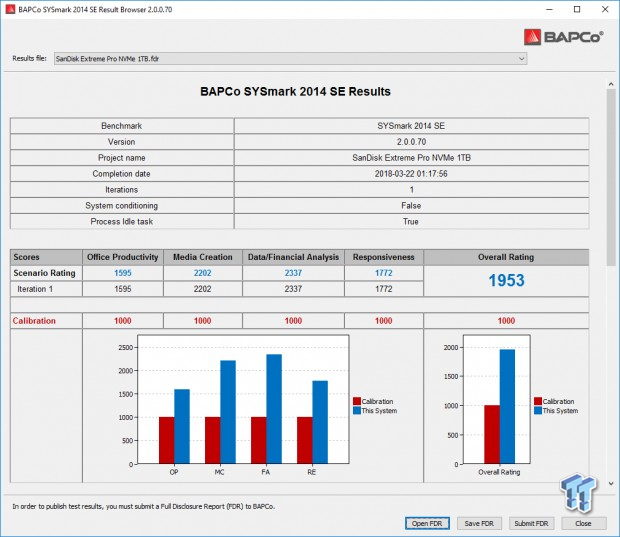
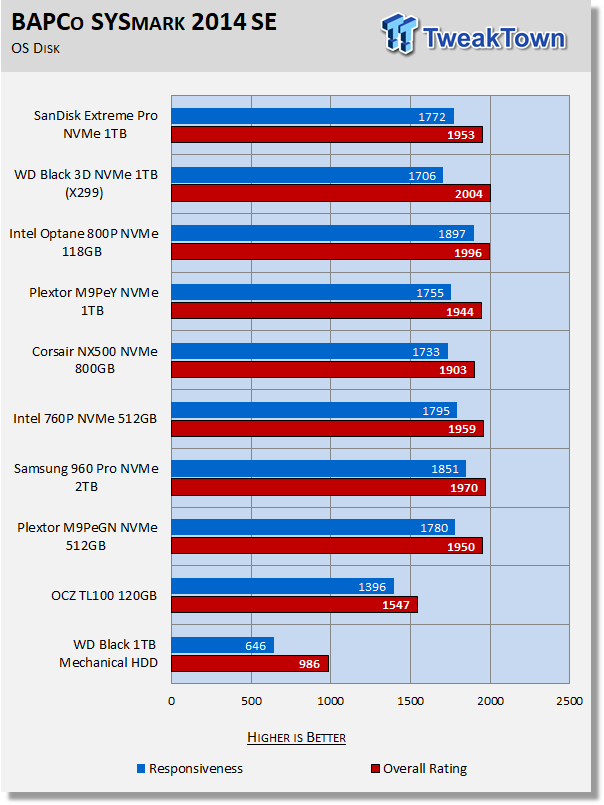
This lineup is a bit different than the others we've used for our test pool to this point. This is because these are the only SSDs we've run on our new Z270 storage testing platform.
With all other benchmarks, there is very little difference between our Z170 and Z270 platforms. However, with SYSMark there is a marked difference due to increased CPU performance. The same holds true for X299. It will deliver a higher total score than Z270.
Not the best, but still near the top of what flash-based SSDs can deliver.
Benchmarks (Secondary) - IOPS, Response & Transfer Rate
Iometer - Maximum IOPS
Version and / or Patch Used: Iometer 2014
We use Iometer to measure high queue depth performance (No Partition). We test NVMe SSDs using eight threads at QD32 (QD256). We do this because we want to see what the drive can generate at its maximum attainable queue depth.
Max IOPS Read
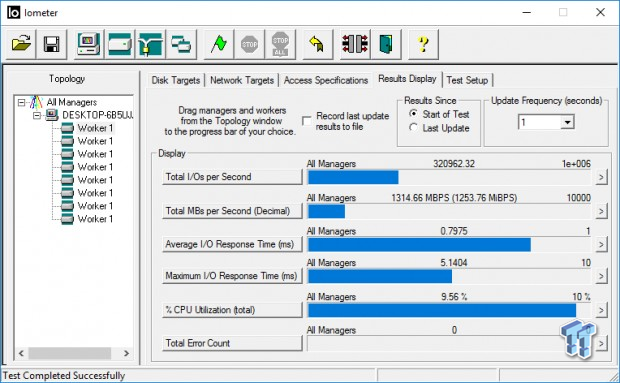
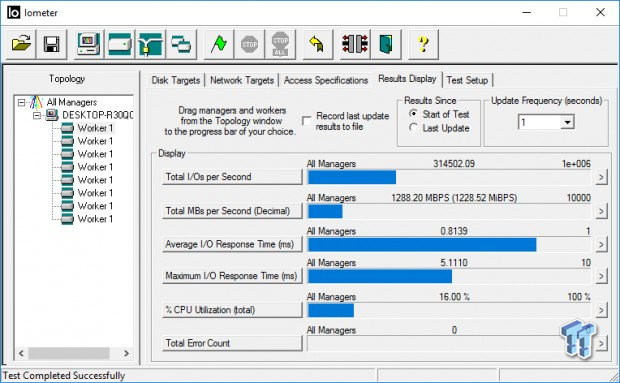
Max IOPS Write
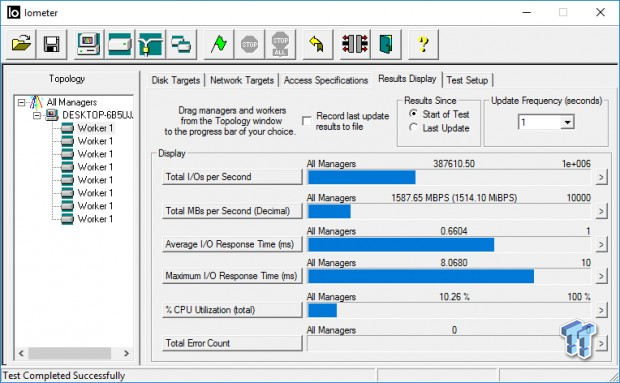
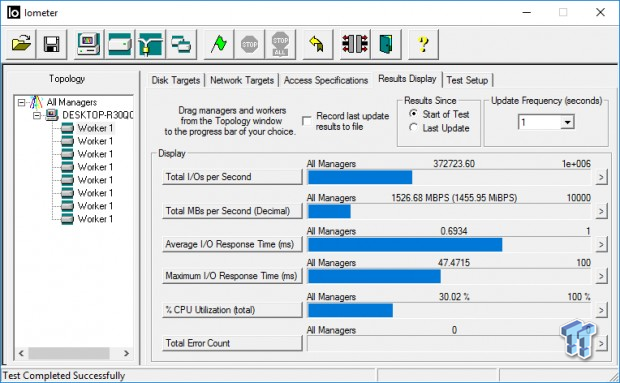
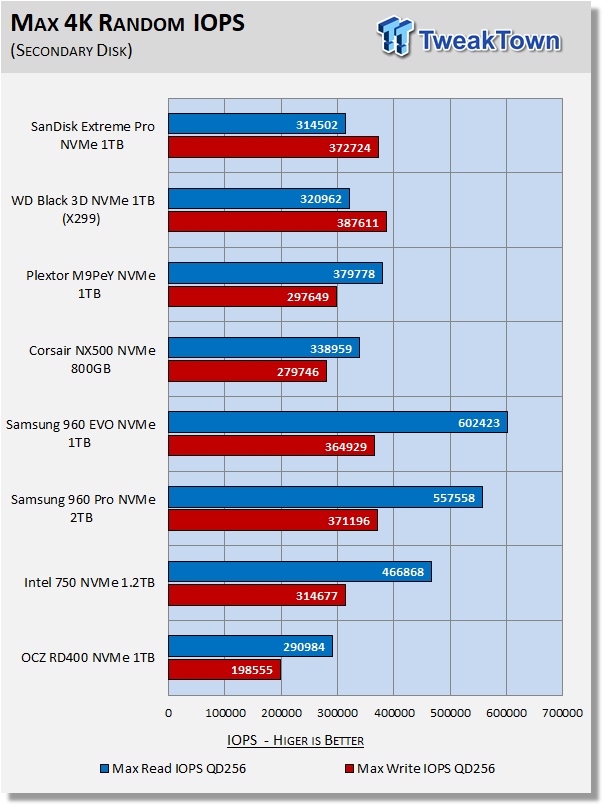
Western Digital uses CDM for their factory specs which is why random read IOPS are so much lower on this chart. Without a partition, the WD drives are not reading from the SLC cache. Random Write IOPS as delivered by the WD offerings are both new lab records for flash-based SSDs.
We decided to see what would happen if we ran this test with a partition on the drive:
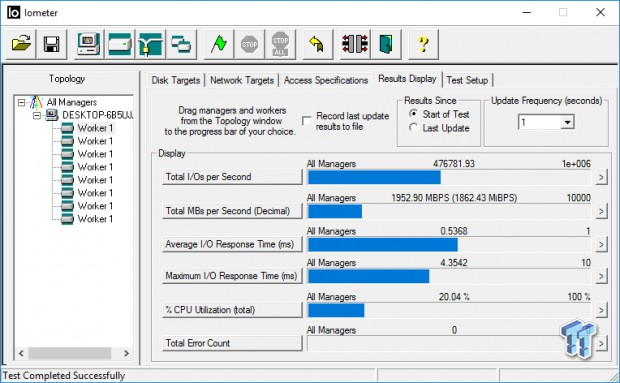
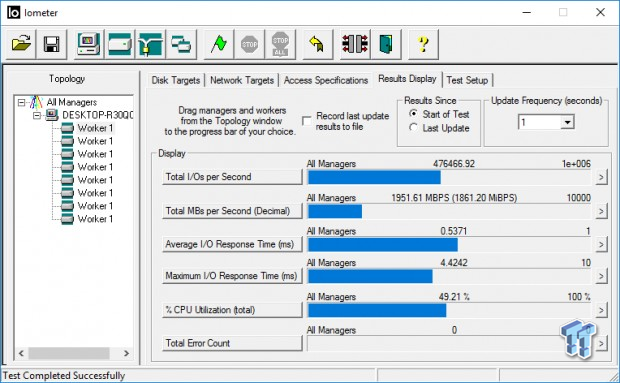
Both drives on both platforms hit 476K random read IOPS with a partition on the drive.
Iometer - Disk Response
Version and / or Patch Used: Iometer 2014
We use Iometer to measure disk response times. Disk response times are measured at an industry accepted standard of 4K QD1 for both write and read. Each test runs twice for 30 seconds consecutively, with a 5-second ramp-up before each test. We partition the drive/array as a secondary device for this testing.
Avg. Write Response
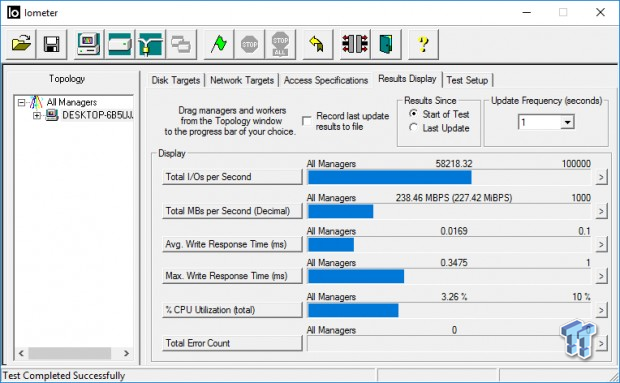
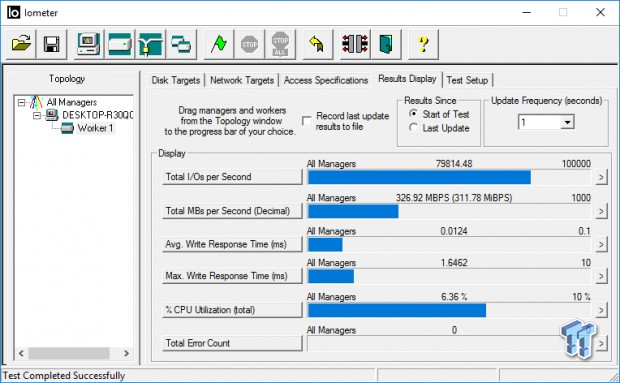
Avg. Read Response
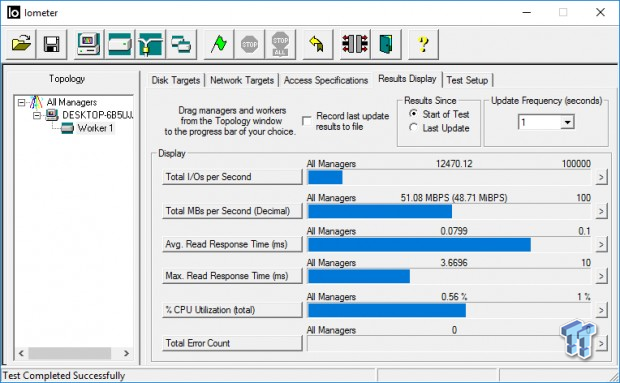
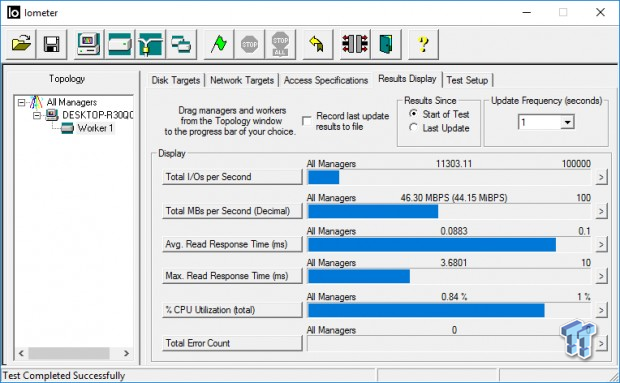
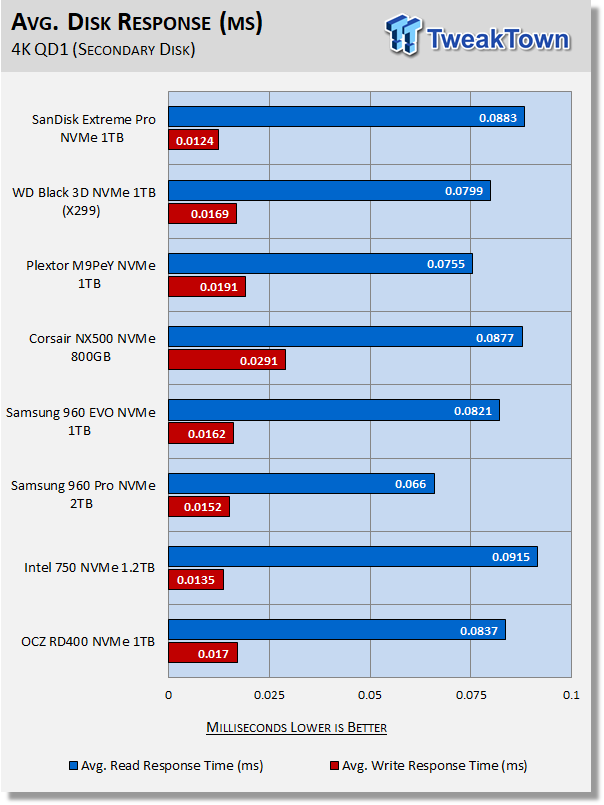
The SanDisk Extreme Pro running on our Z270 test system sets a new lab record for the lowest write response of any flash-based SSD we've tested.
DiskBench - Transfer Rate
Version and / or Patch Used: 2.6.2.0
We use DiskBench to time a 28.6GB block (9,882 files in 1,247 folders) composed primarily of incompressible sequential and random data as it's transferred from our Toshiba RD400 1TB NVME SSD to our test drive.
We then read from a 6GB zip file that's part of our 28.6GB data block to determine the test drive's read transfer rate. Our system is restarted prior to the read test to clear any cached data, ensuring an accurate test result.
Write Transfer Rate

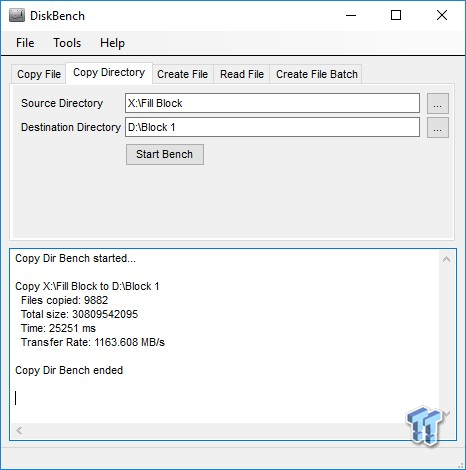
Read Transfer Rate
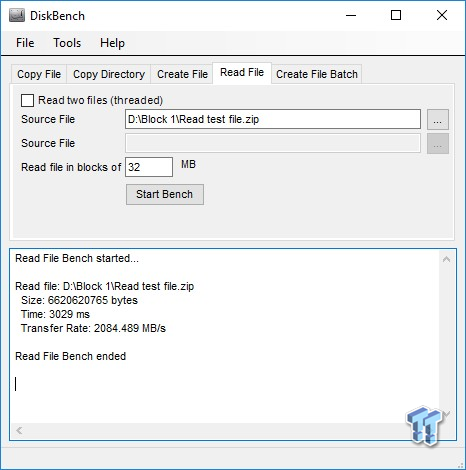
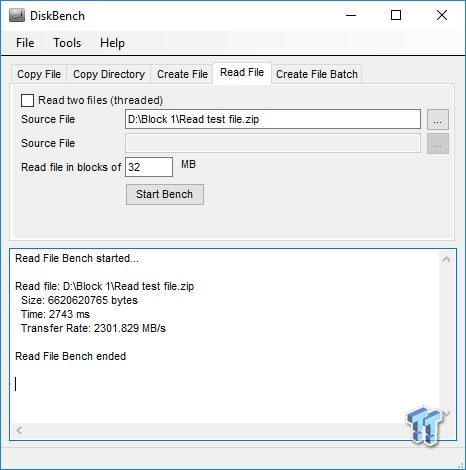
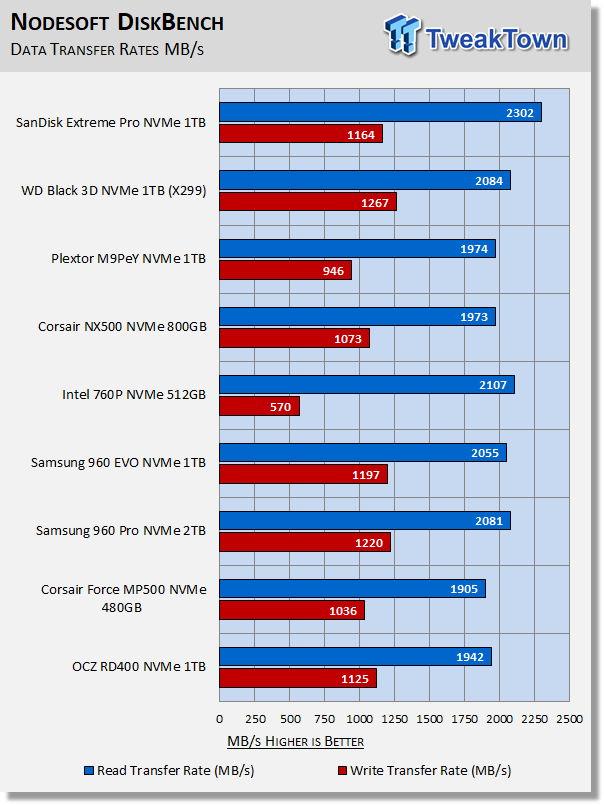
We recently upgraded our test system to Windows 10 build 14393. With that upgrade, write transfer rates almost doubled. The reason for this, as far as we know, is that CPU power switching modes have been relaxed on the latest version of Windows 10.
We included the NVMe drives we've tested to date on this build of Windows 10. If you needed a good reason to upgrade to a newer version of Windows 10; this is a good reason.
More lab records fall to the Western Digital offerings. The Extreme Pro running on our Z270 system smashes our read transfer rate record. The WD Black running on our X299 system delivers a new lab record for write transfer rate.
Benchmarks (Secondary Volume) - PCMark 8 Extended
Futuremark PCMark 8 Extended
Heavy Workload Model
PCMark 8's consistency test simulates an extended duration heavy workload environment. PCMark 8 has built-in, command line executed storage testing. The PCMark 8 Consistency test measures the performance consistency and the degradation tendency of a storage system.
The Storage test workloads are repeated. Between each repetition, the storage system is bombarded with a usage that causes degraded drive performance. In the first part of the test, the cycle continues until a steady degraded level of performance has been reached. (Steady State)
In the second part, the recovery of the system is tested by allowing the system to idle and measuring the performance after 5-minute long intervals. (Internal drive maintenance: Garbage Collection (GC))
The test reports the performance level at the start, the degraded steady-state, and the recovered state, as well as the number of iterations required to reach the degraded state and the recovered state.
We feel Futuremark's Consistency Test is the best test ever devised to show the true performance of solid state storage in an extended duration heavy workload environment. This test takes on average 13 to 17 hours to complete and writes somewhere between 450GB and 14,000GB of test data depending on the drive.
If you want to know what an SSDs steady-state performance is going to look like during a heavy workload, this test will show you.
Here's a breakdown of Futuremark's Consistency Test:
Precondition phase:
1. Write to the drive sequentially through up to the reported capacity with random data.
2. Write the drive through a second time (to take care of over-provisioning).
Degradation phase:
1. Run writes of random size between 8*512 and 2048*512 bytes on random offsets for 10 minutes.
2. Run performance test (one pass only).
3. Repeat 1 and 2 for 8 times, and on each pass increase the duration of random writes by 5 minutes.
Steady state phase:
1. Run writes of random size between 8*512 and 2048*512 bytes on random offsets for 50 minutes.
2. Run performance test (one pass only).
3. Repeat 1 and 2 for 5 times.
Recovery phase:
1. Idle for 5 minutes.
2. Run performance test (one pass only).
3. Repeat 1 and 2 for 5 times.
Storage Score, Storage Bandwidth
PCMark 8's Consistency test provides a ton of data output that we use to judge a drive's performance.
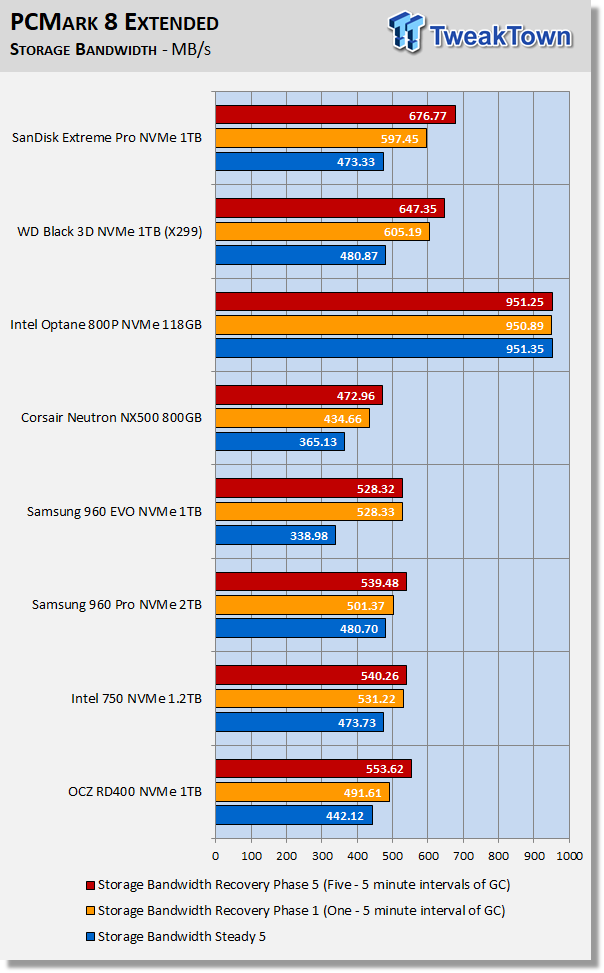
We consider steady-state bandwidth (the blue bar) our test that carries the most weight in ranking a drive/arrays heavy workload performance. Performance after Garbage Collection (GC) (the orange and red bars) carries the most weight when evaluating moderate consumer workload performance.
This lineup is a bit different because we didn't test some of the drives that appear on our other charts with this test. With WD's new controller in play we wanted to see how it - paired with a TLC flash array would handle this test. For purposes of our evaluation, we will ignore the Optane 800P because it is not flash-based.
Our test subjects deliver more lab records for flash-based SSDs. What this test shows is the WD offerings deliver much more storage bandwidth after recovering from a heavy workload than any flash-based SSD we've ever tested. We didn't think we would ever see this from TLC-based SSDs, but there is it courtesy of Western Digital.
With these results and the numerous other lab records set by our test subjects, we can't help but consider the possibility that the WD Black and the Extreme Pro could be the overall best performing flash-based consumer SSDs on the market at this time.
Storage Bandwidth Per Phase
We chart our test subject's storage bandwidth as reported at each of the test's 18 trace iterations. This gives us a good visual perspective of how our test subjects perform as testing progresses. This chart sheds more light on how the drives perform as they progress through the testing phases.
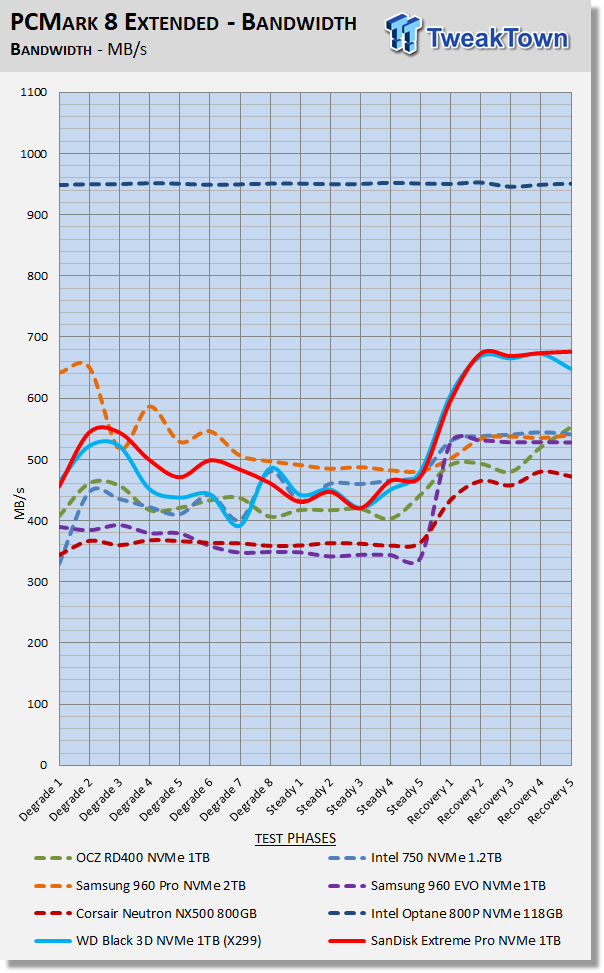
Total Access Time (Latency)
We chart the total time the disk is accessed as reported at each of the test's 18 trace iterations. This helps shed some light on how the drive performs at each of the 18 phases of this test.
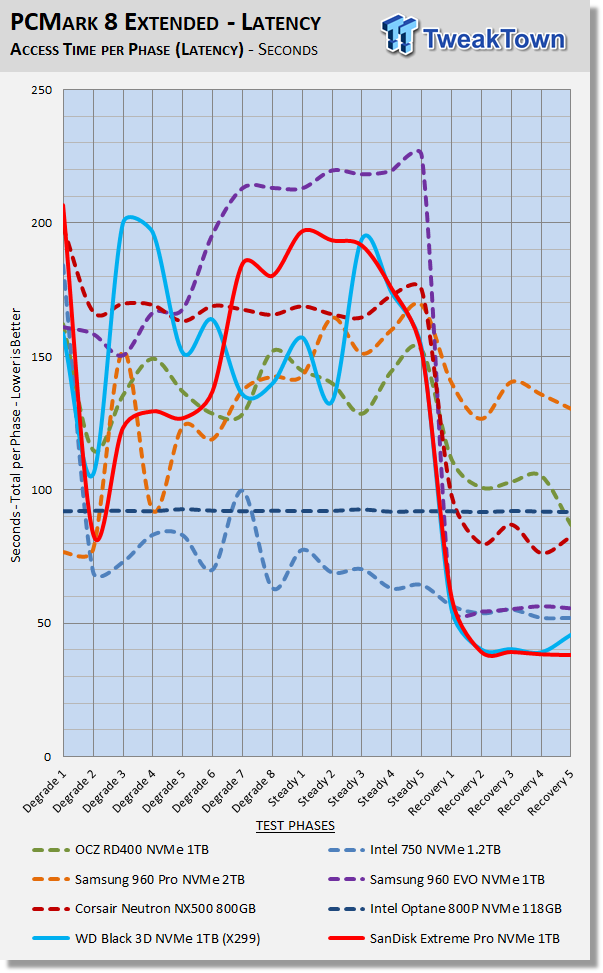
Disk Busy Time
Disk Busy Time is how long the disk is busy working. We chart the total time the disk is working as reported at each of the tests 18 trace iterations.
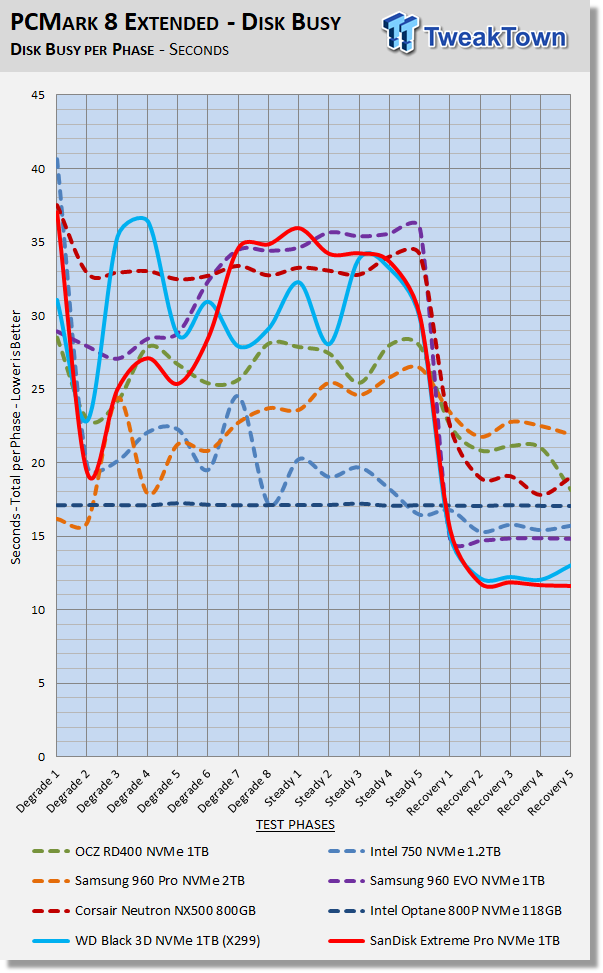
Data Written
We measure the total amount of random data that our test drive/array is capable of writing during the degradation phases of the consistency test. Pre-conditioning data is not included in the total.
The total combined time that degradation data is written to the drive/array is 470 minutes. This can be very telling. The better a drive/array can process a continuous stream of random data; the more data will be written.
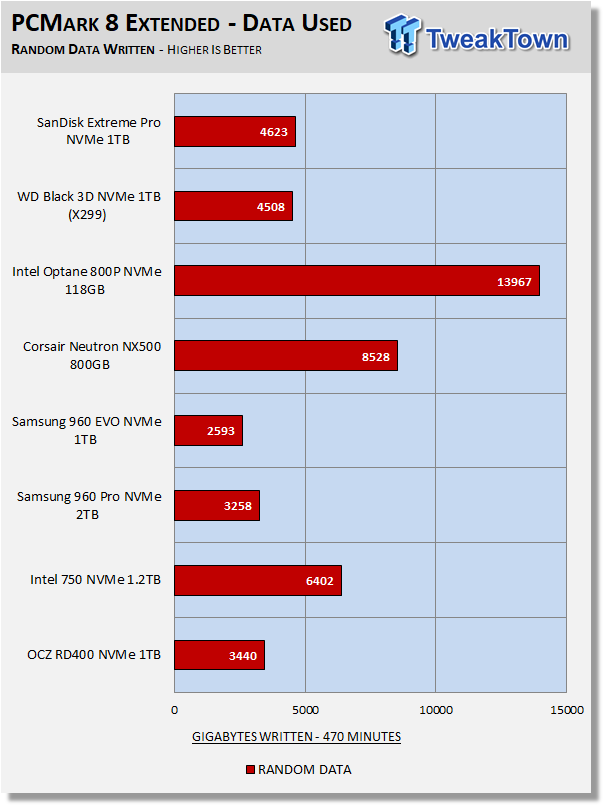
For having a minimal amount of OP, and being TLC-based SSDs, our test subjects perform remarkably well.
Benchmarks 70/30 Mixed Workload & Sustained Seq. Write
70/30 Mixed Workload Test (Sledgehammer)
Version and / or Patch Used: Iometer 2014
Heavy Workload Model
This test hammers a drive so hard we've dubbed it "Sledgehammer". Our 70/30 Mixed Workload test is designed to simulate a heavy-duty enthusiast/workstation steady-state environment.
We feel that a mix of 70% read/30% write, full random 4K transfers best represents this type of user environment. Our test allows us to see the drive enter into and reach a steady state as the test progresses.
Phase one of the test preconditions the drive for 1 hour with 128K sequential writes at QD32. Phase two of the test runs a 70% read/30% write at QD32, full random 4K transfer workload on the drive for 1 hour. We log and chart (phase two) IOPS data at 5-second intervals for 1 hour (720 data points). 60 data points = 5 minutes.
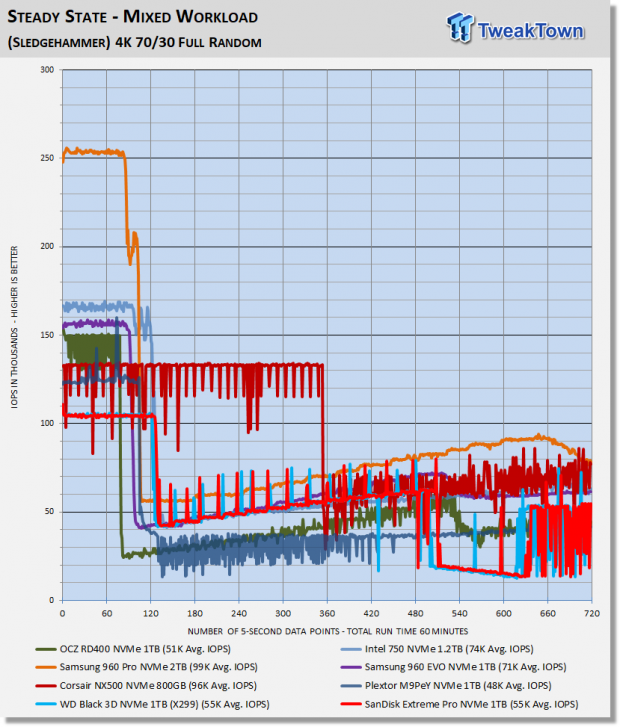
What we like about this test is that it reflects reality. Everything lines up, as it should. Consumer drives don't outperform Enterprise-Class SSDs that were designed for enterprise workloads. Consumer drives based on old technology are not outperforming modern Performance-Class SSDs, etc.
Lack of OP gets the better of TLC SSDs when tackling the Sledgehammer and our test subjects are no exception.
Sustained Sequential Write
Version and / or Patch Used: Iometer 2014
Heavy Workload Model
We write to the drive for 1 hour with 128K sequential writes at QD32. We log and chart megabytes per second data at 5-second intervals for 1 hour (720 data points). 60 data points = 5 minutes.
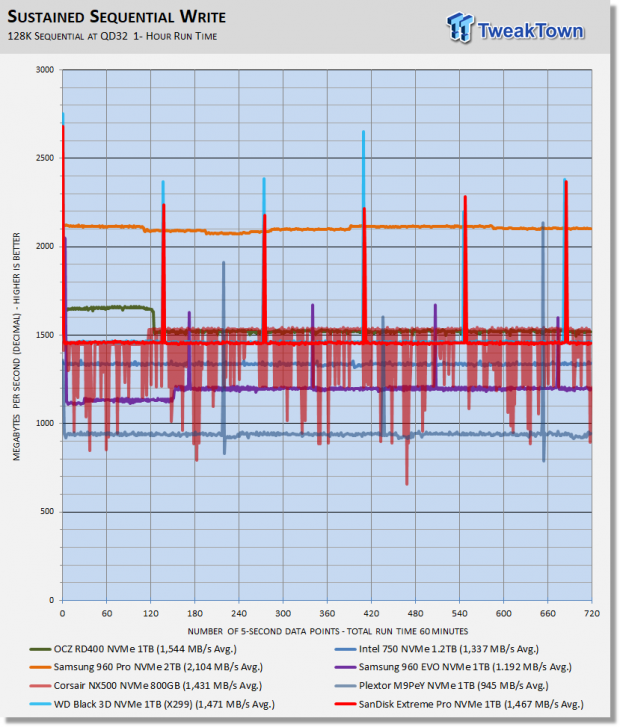
WD specs the Black and Extreme Pro as capable of 1,600 MB/s sustained sequential write performance using 512K blocks. We use 128K blocks which is the reason why we are coming in at a slightly lower rate. A sustained sequential write rate of over 1,400 MB/s is once again a lab record for a TLC-based consumer SSD.
Maxed-Out Performance (MOP)
This testing is just to see what the drive is capable of in an FOB (Fresh Out of Box) state under optimal conditions. We are utilizing empty volumes running on Windows 10 64-bit and Windows Server 2008 R2 64-bit for this testing.
Windows 10 MOP
WD Black 1TB M.2 NVMe SSD (X299)
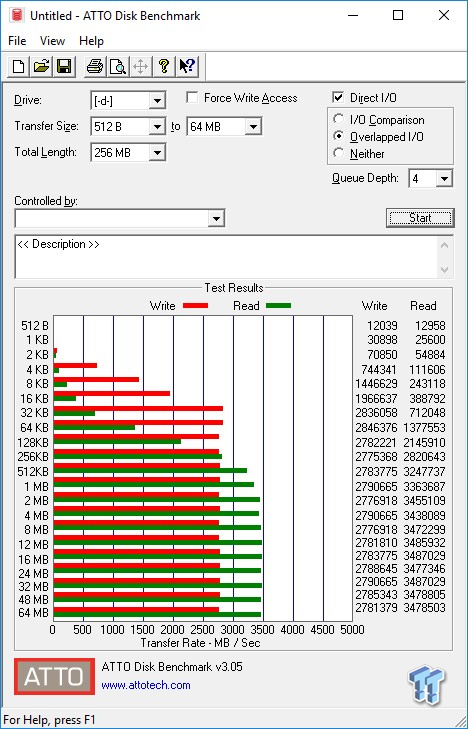
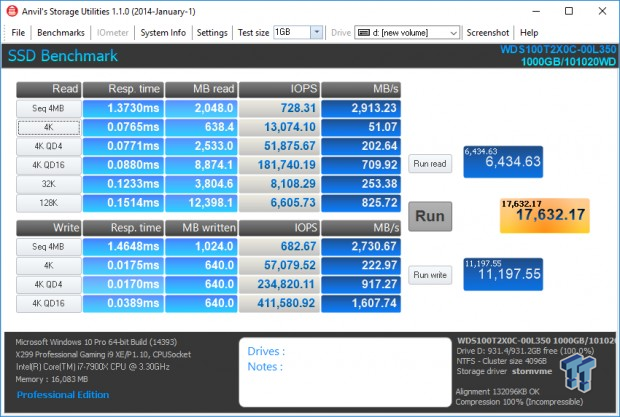
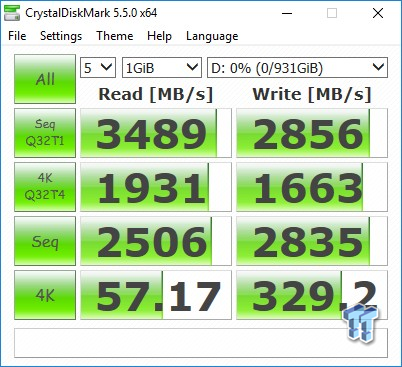


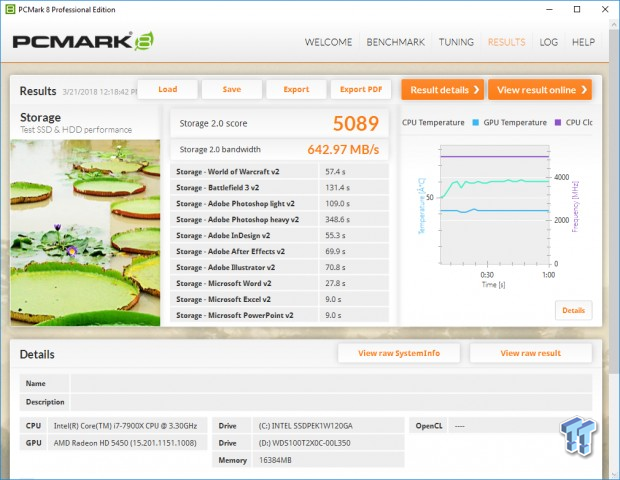
Windows Server 2008 R2 MOP
WD Black 1TB M.2 NVMe SSD (X299)
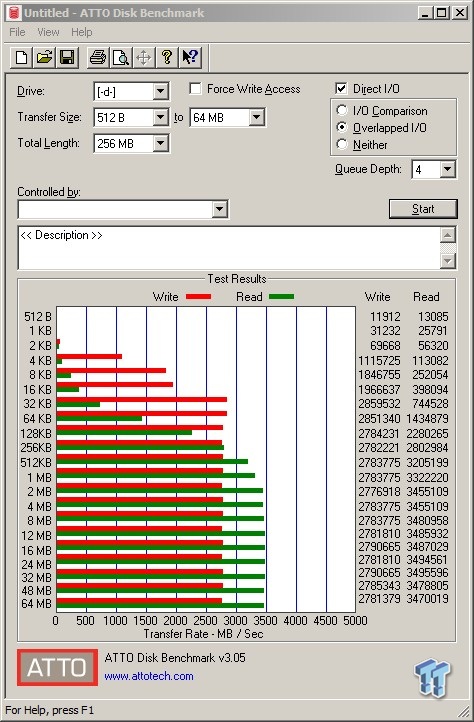
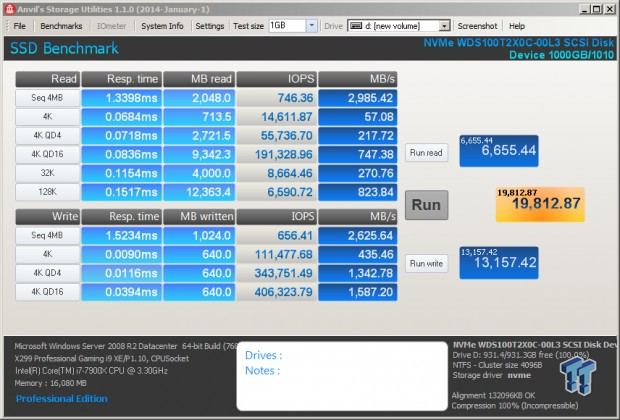
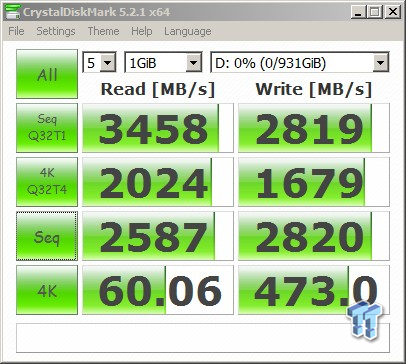
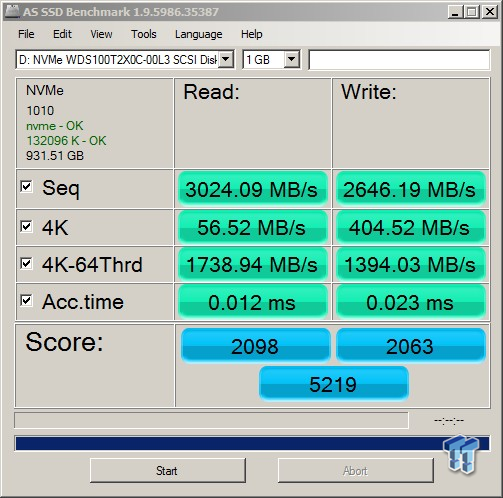
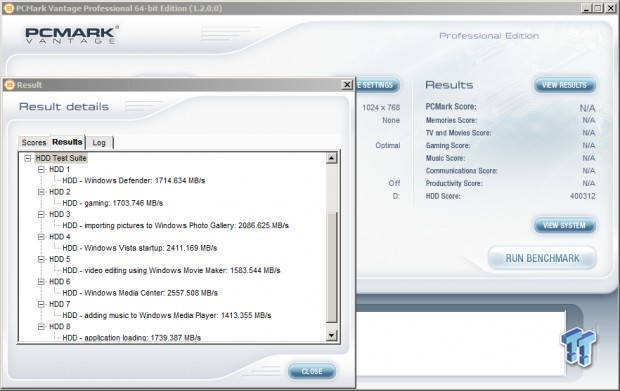
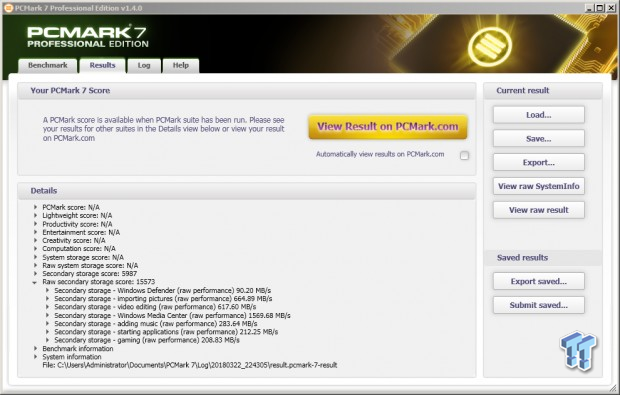
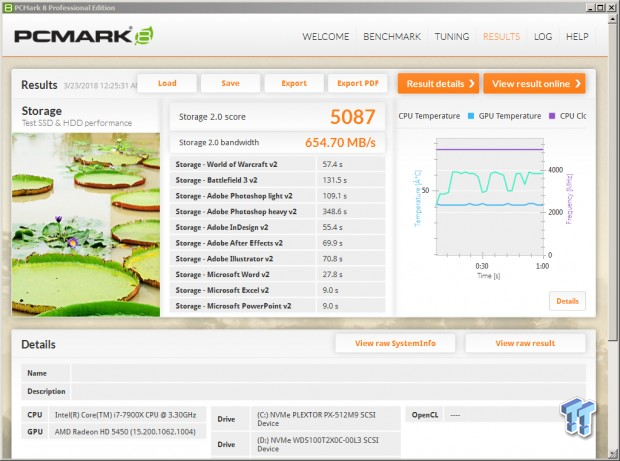
Windows 10 MOP
SanDisk Extreme Pro 1TB M.2 NVMe SSD (Z270)
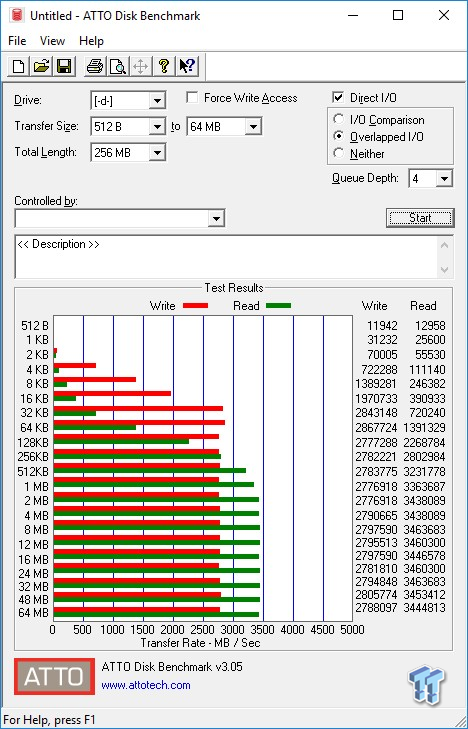
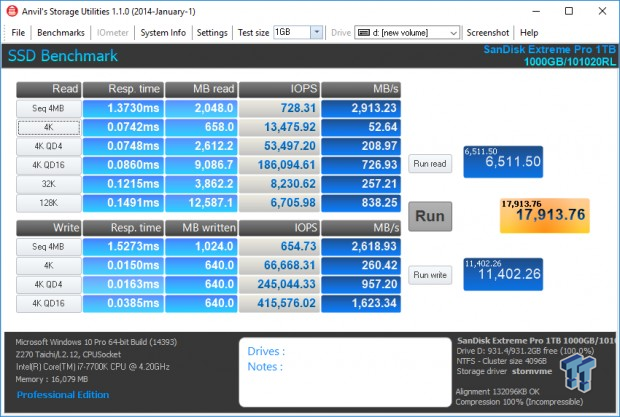
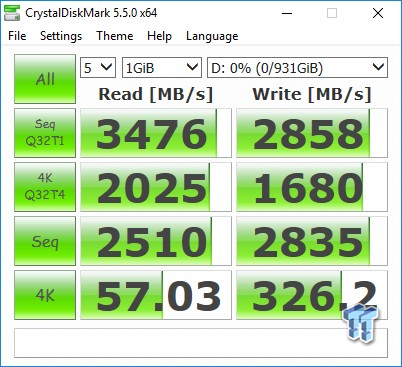
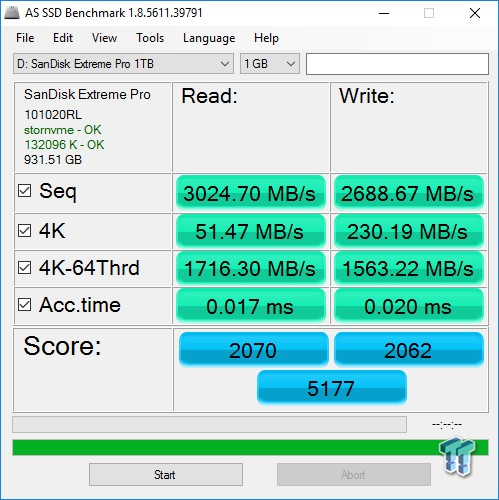
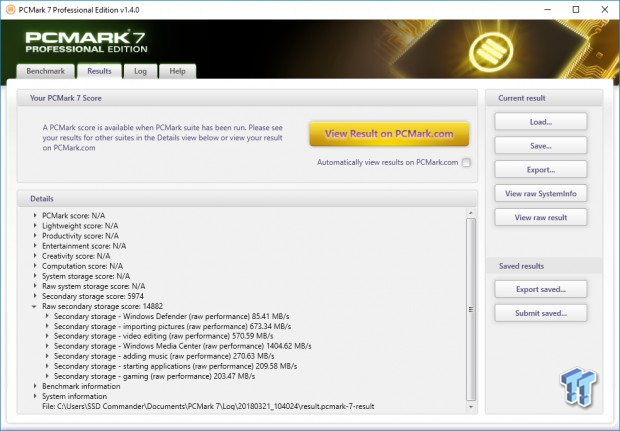
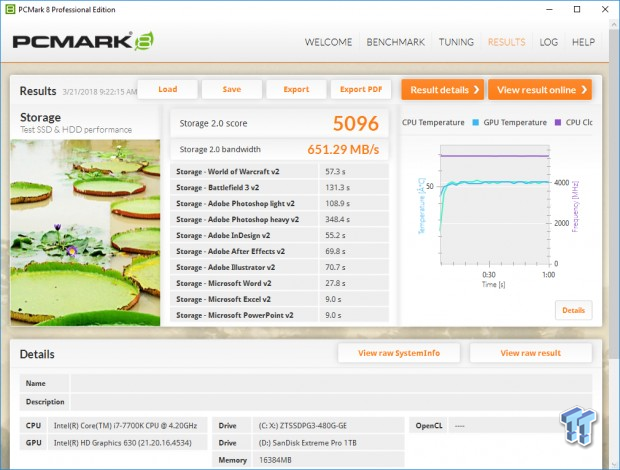
Windows Server 2008 R2 MOP
SanDisk Extreme Pro 1TB M.2 NVMe SSD (Z270)
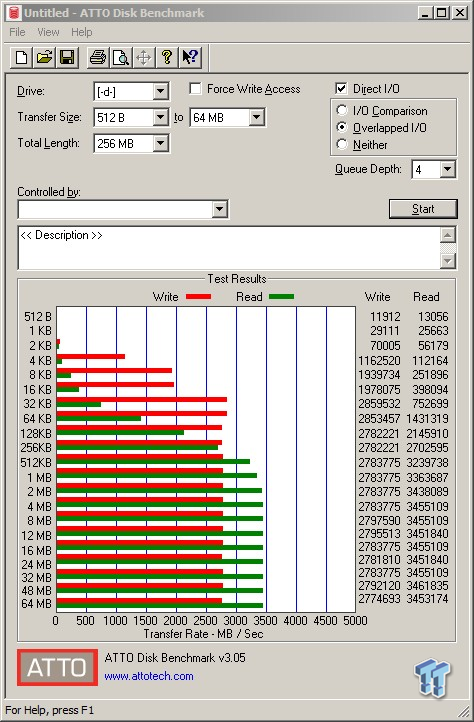
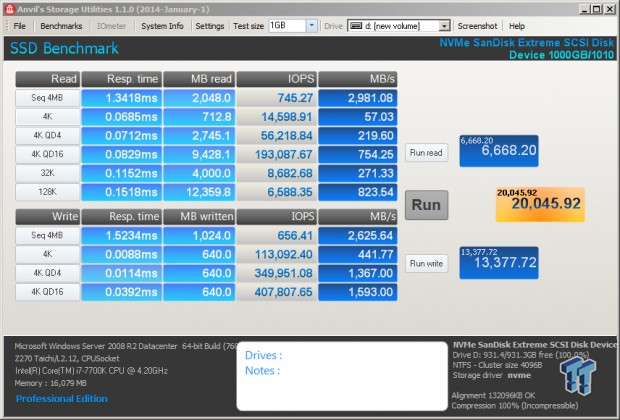
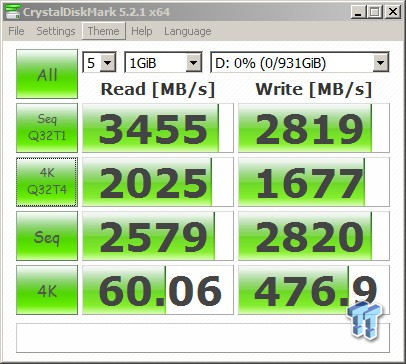
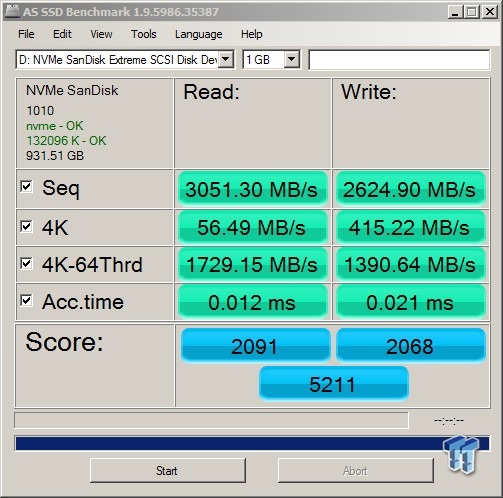
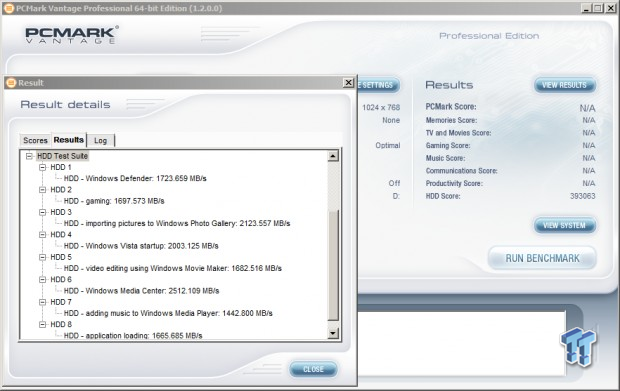
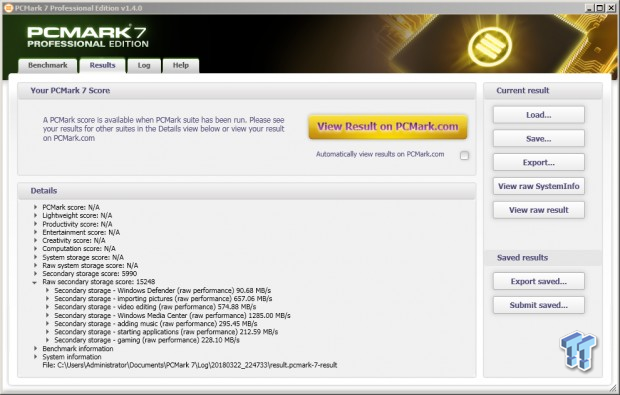
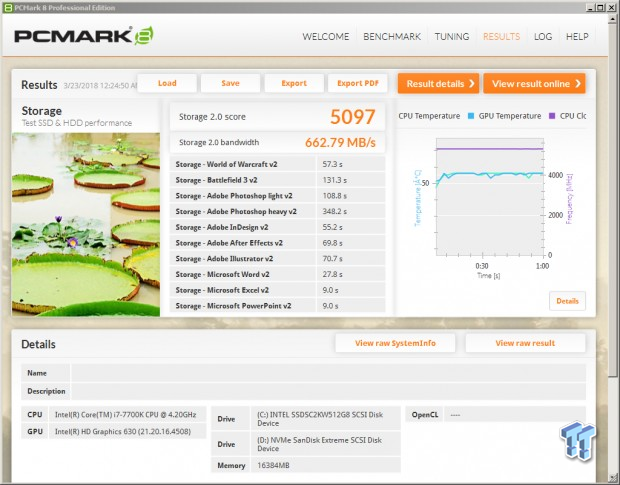
Some of these results are downright incredible.
Final Thoughts
Sequencers, tiered caching, geared ECC - Western Digital's NVMe controller is truly a force to be reckoned with. As we saw throughout our testing, the built from the ground up WD controller ushers in the end of Samsung's reign as the undisputed king of flash-based enthusiast storage. With no less than six new lab records delivered by Western Digital's latest and greatest, it is safe to say that WD is now the leading performance broker when it comes to consumer TLC flash-based storage.
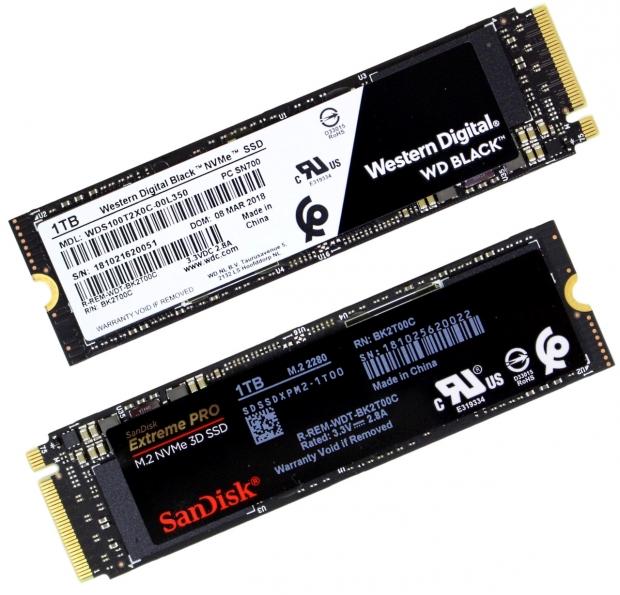
We are stunned and amazed that any TLC SSD can challenge the best MLC has given us to this point. Based on performance alone, we are compelled to consider that the WD Black and Extreme Pro may actually be the best performing flash-based consumer SSDs ever. They were able to surpass the mighty Samsung 960 Pro's performance more often than not. Now, if we take into consideration performance and price point, there is no question that the WD offerings are in fact the best value for an enthusiast grade SSD on the market today.
Of all the testing we did, we are most impressed with the way the 1TB WD Black and Extreme Pro delivered far and away the best PCMark 8 extended recovery performance we've seen from any flash-based SSD. It's leaps and bounds better than Samsung's MLC powered 960 Pro 2TB. This means that shortly after running extended heavy workloads, there is no flash-based SSD that will deliver better moderate consumer type workload performance.
Additionally, the WD Black and Extreme Pro are far and away the best performing consumer SSDs when writing data. Whether it be random or sequential data, the WD offerings currently have no equal. The only place where we see room for improvement would be read performance at low queue depths. We also would like WD to get on board with a proprietary NVMe driver. Samsung and Intel both offer a performance enhancing NVMe driver which boosts random performance significantly.
64-layer TLC flash has, this year, become the dominant type of flash in both the consumer and enterprise space. In-fact, neither WD or Toshiba are planning to produce MLC flash going forward. We didn't think that TLC would be able to completely displace MLC, but it's looking more inevitable with each passing day. In a world full of TLC flash, we are confident in saying that as it stands today, the WD Black and the Extreme Pro are the best of the best.

Because TweakTown tests SSDs with the drive running as our system (OS) disk we are in a relatively unique position to comment on what matters most - actual user experience. As you can imagine, the user experience delivered by the WD Black and Extreme Pro is as good as it gets for flash-based SSDs. It's blow your hair back user experience that will have you congratulating yourself for choosing Western Digital's finest.
Needless to say, the Western Digital Black NVMe and SanDisk Extreme Pro NVMe SSDs are 100% TweakTown recommended.
Pros:
- Overall Performance
- High Endurance
- Value
- Included Software
Cons:
- No Proprietary NVMe Driver

